Favorites
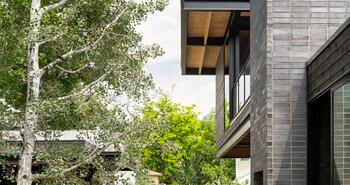
Ebonite Velour
Summit Series
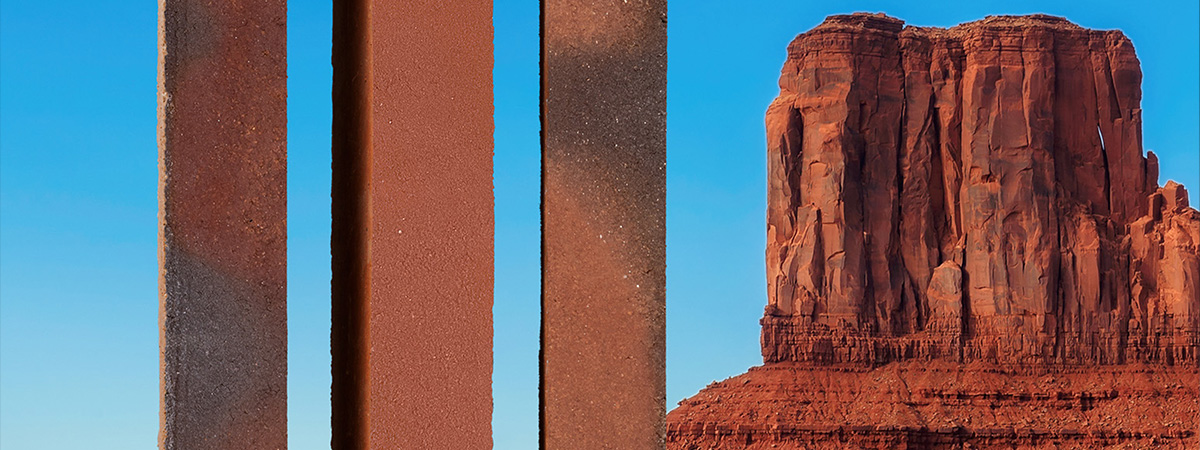
Summit Series
manufactured at Rocky Ridge
The Summit Series of long, linear brick creates a captivating and rugged aesthetic, showcasing a rich tapestry of varied coloring. The interplay of earthy tones lends depth and character to the structure, while the uneven texture and irregular edges provide a tactile experience that speaks to the raw beauty of the material.
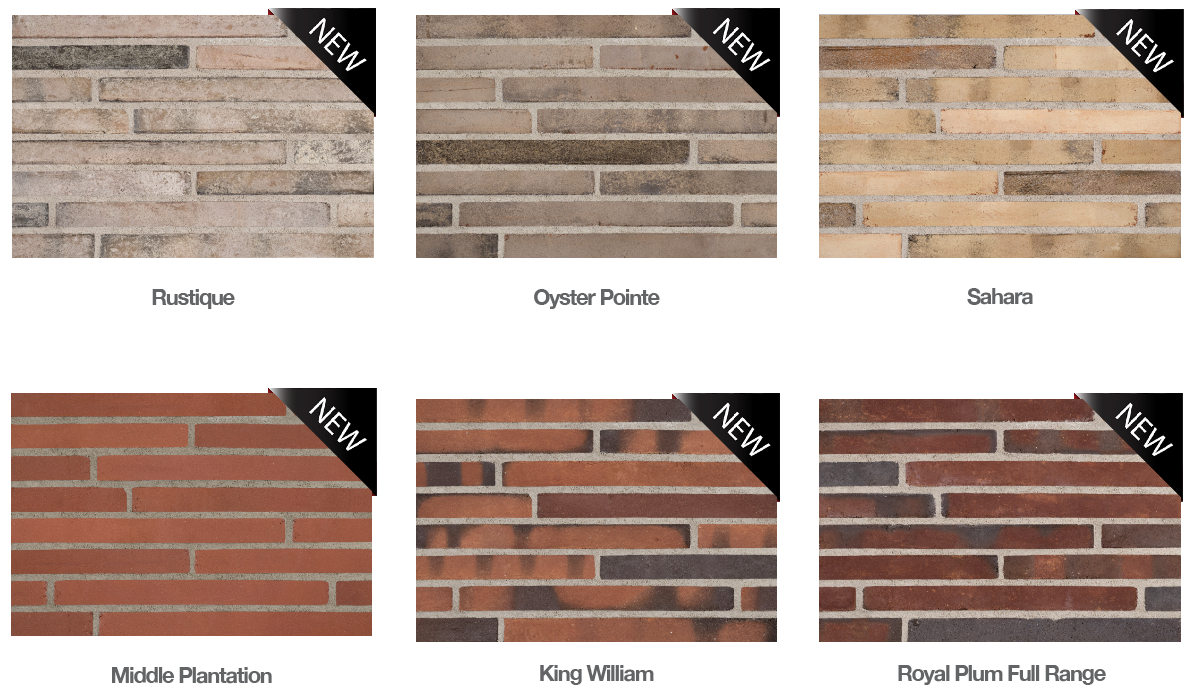
Size: Summit (3-5/8 x 1-5/8 x 17-5/8)
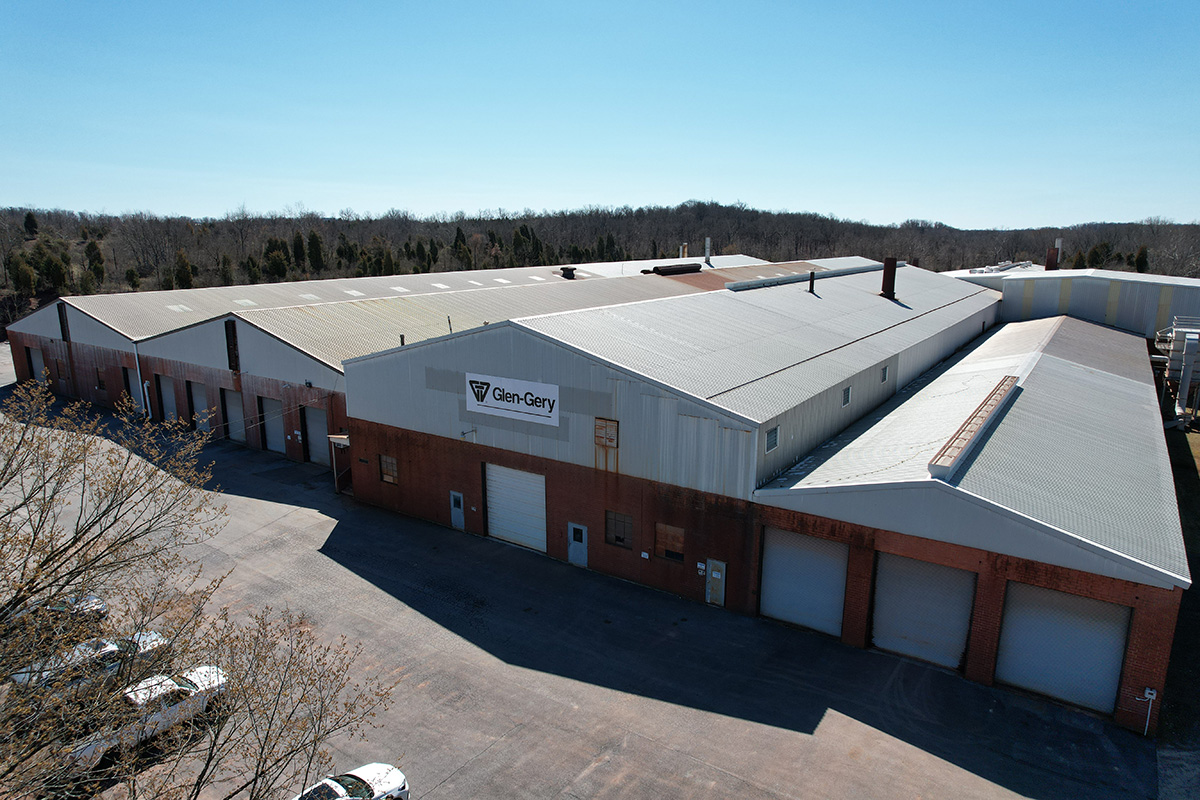
G21 Products
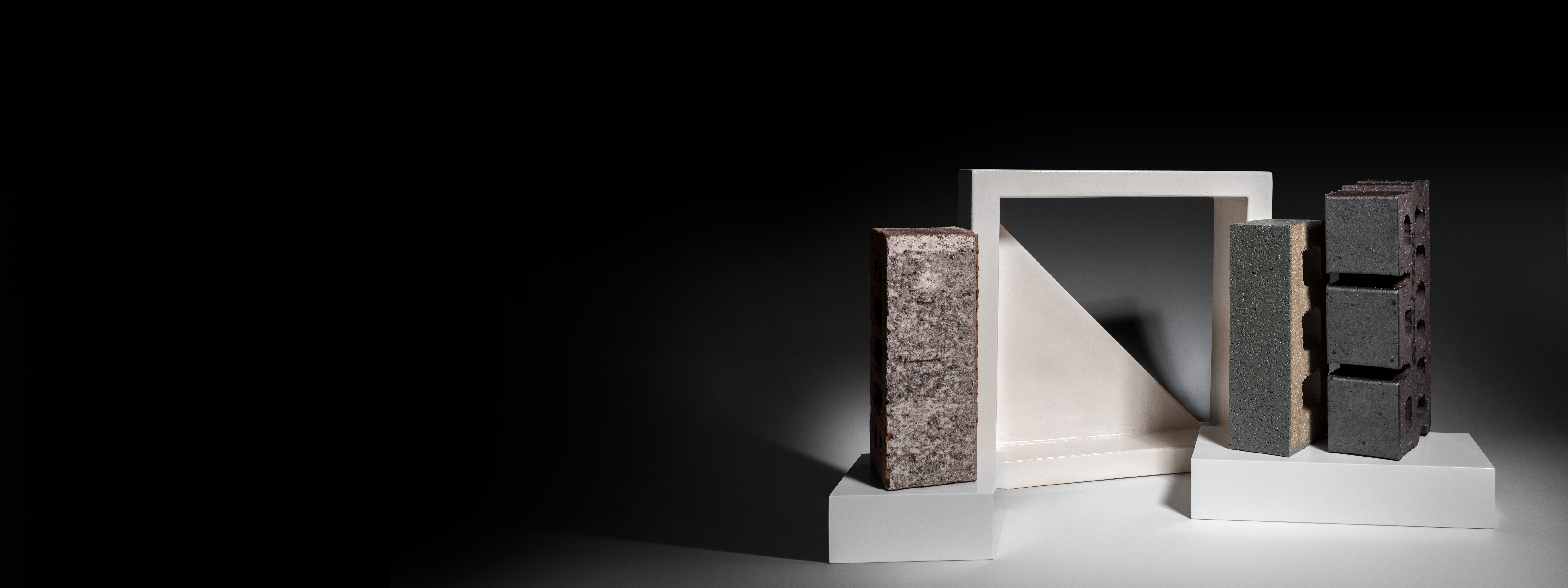
G21: Fashion on Fifth
G21: Fashion on Fifth new products are here from range extensions and exciting new series, in addition to unique international products sourced from around the globe.
Metallix
A brick face that glimmers, sparks immediate interest and which possesses great subtlety. With its depth of color the Metallix range reflects light on finished brickwork, creating a satin metallic sheen that will lend depth and sophistication to your project.
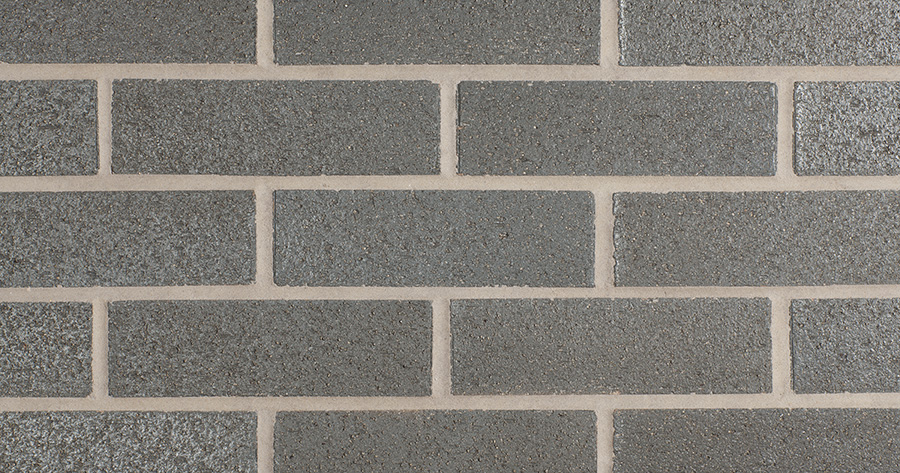
|
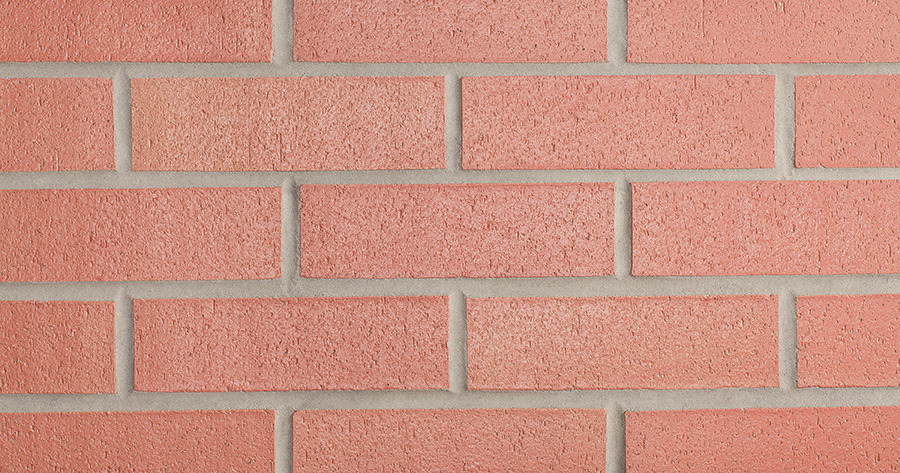
|
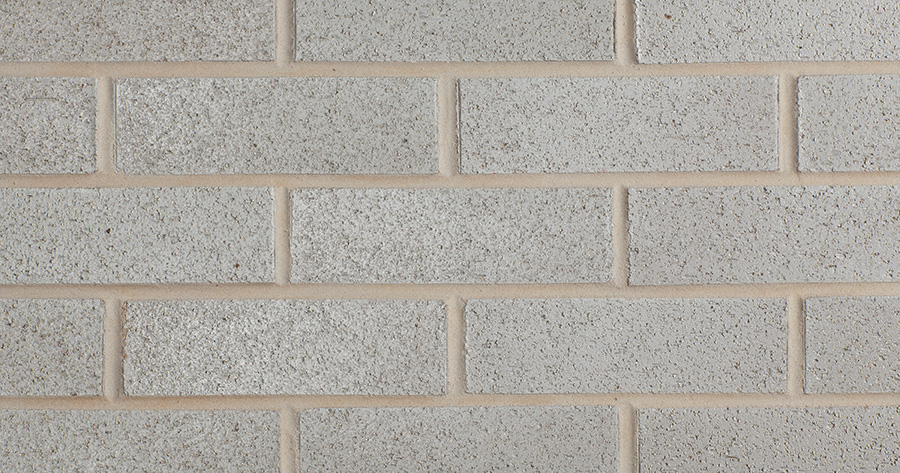
|

|
|---|
Aviator Series
The Aviator range consists of several distinct monochromatic tone brick with sharp contrasts that resemble those of early aircraft and aviation equipment. The colors are unique and versatile, creating an architectural feel that will surely stand out on the block.
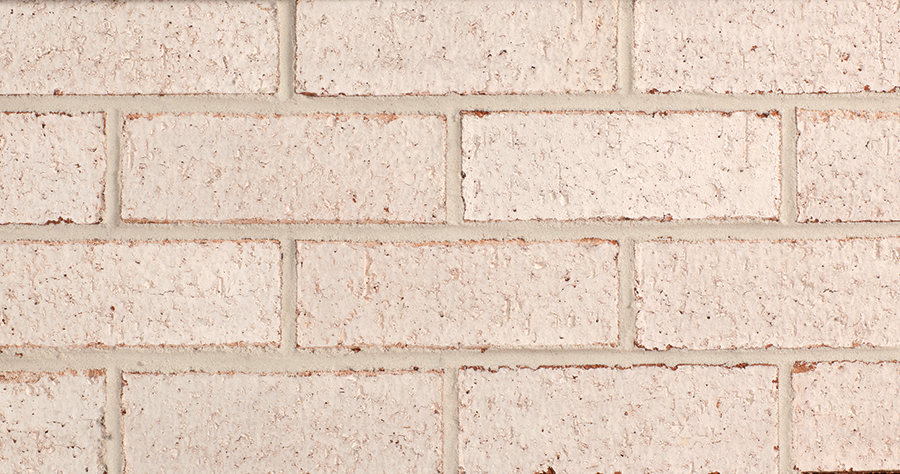
|
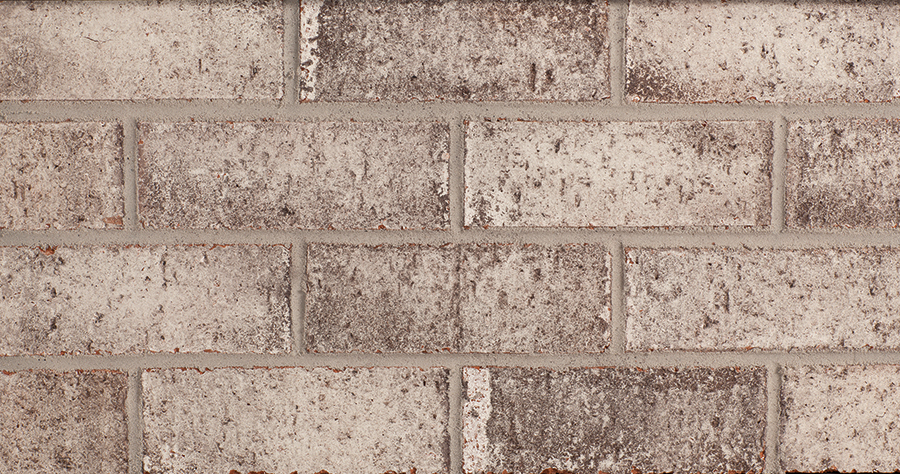
|
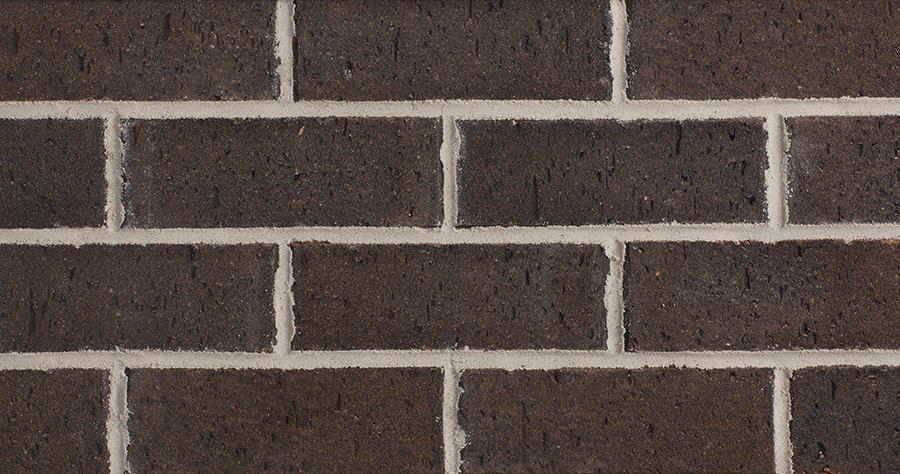
|

|
|---|
Terraçade
Creativity meets practicality. Appealing to both the creative and the practical, Terraçade has been designed to complement a diverse range of architectural styles, while the Terraçade system radically simplifies and speeds up the entire design and installation process. The complete Terraçade collection is prefinished and colorfast, meaning it will look as vibrant today as it will in 100 years. Popular colors:

|

|
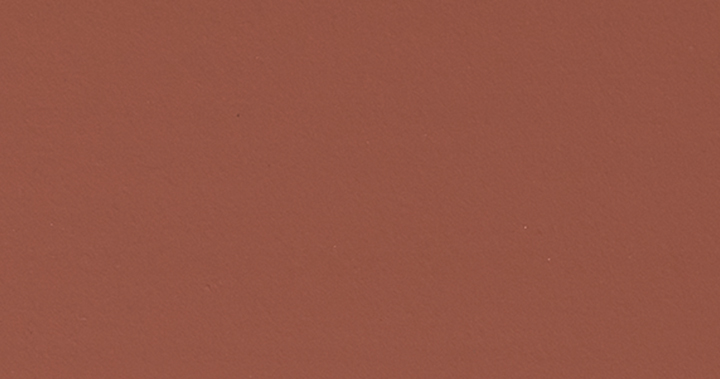
|
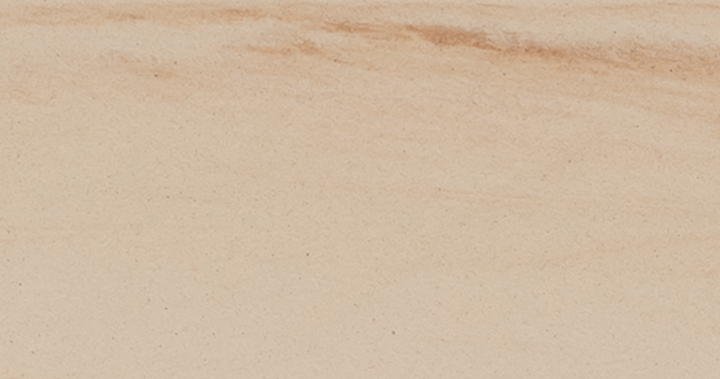
|
|---|
Glen Ridge Series
The strength, permanence, and beauty of the stone in this collection are benchmark qualities underpinning many architectural designs—contemporary or traditional; commercial, residential, or institutional—
manufactured to the same exacting standards of quality that have informed the rest of our products.
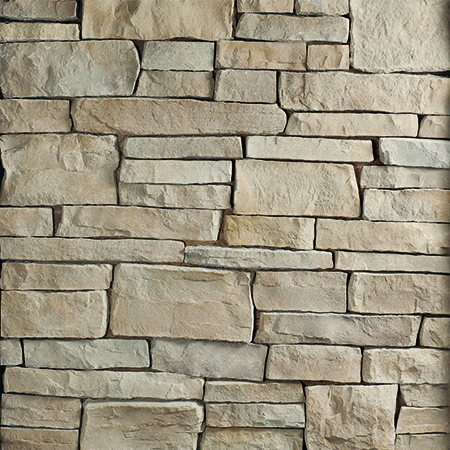
|
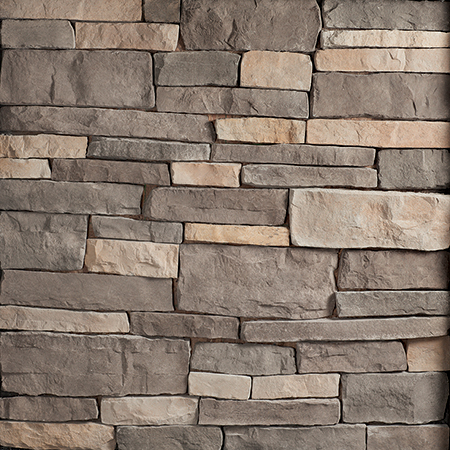
|
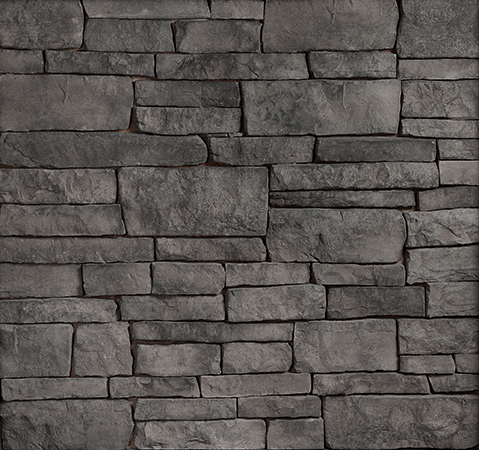
|

|
|---|
Titan Plus Structural Brick
Load-bearing hollow brick as part of the Downtown Series. This highly versatile series provides affordability and style to a large range of products across natural clay tones and subtle, yet apparent textured faces adding warmth to any project.
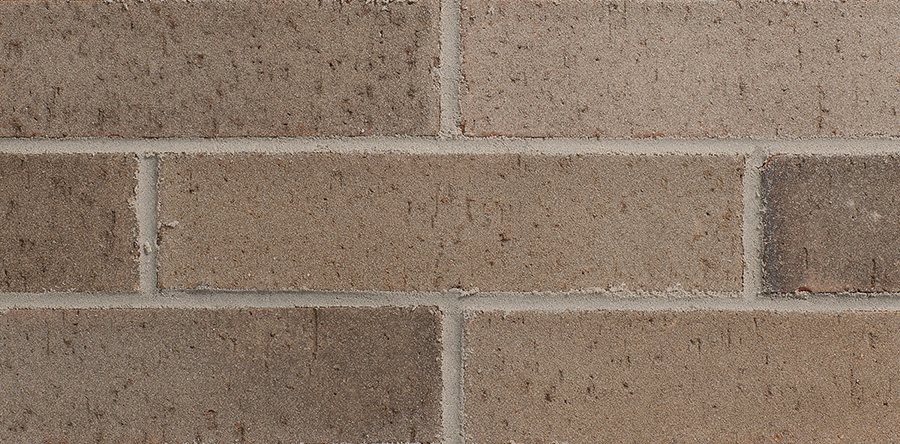
|
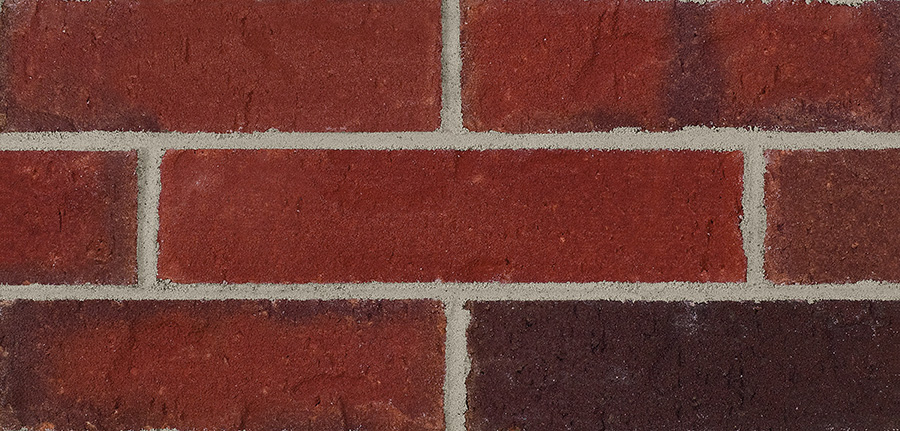
|
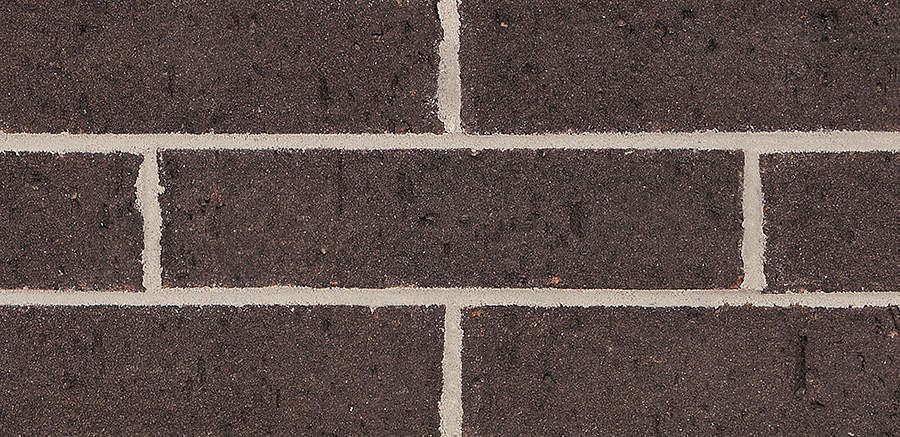
|

|
|---|
Emporium+ Series
Emporium+ engobe brick, available in wirecut and smooth finishes, are lightly coated facebrick that offer premium colors with unrivaled quality and sophistication. Natural light will bring out the luster of their finished appearance.
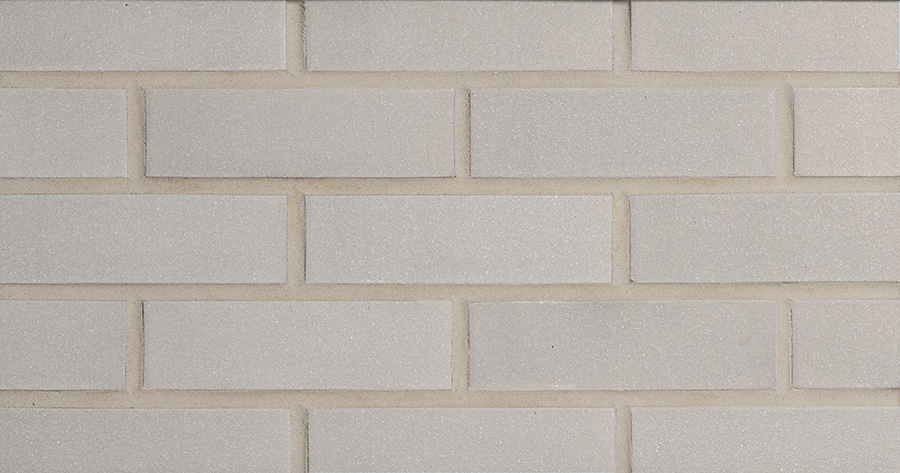
|
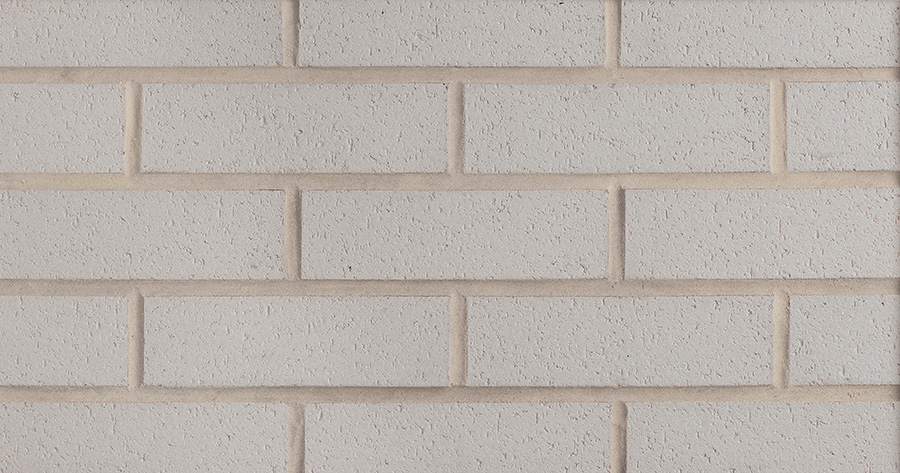
|
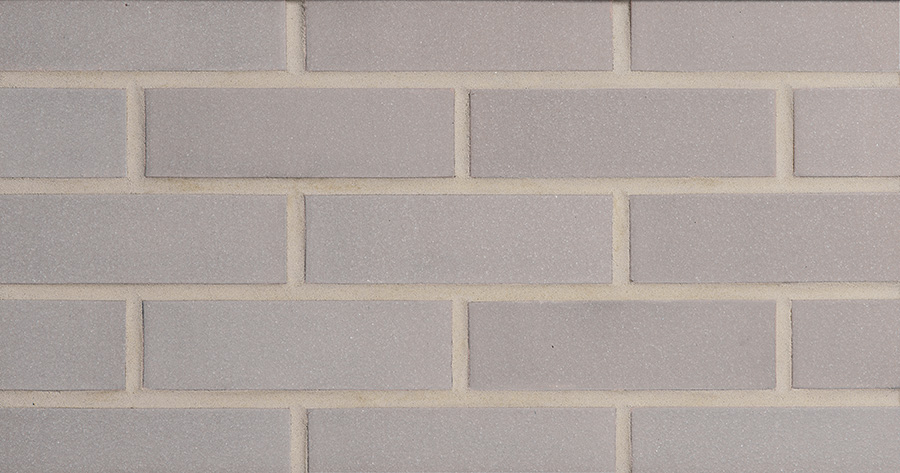
|
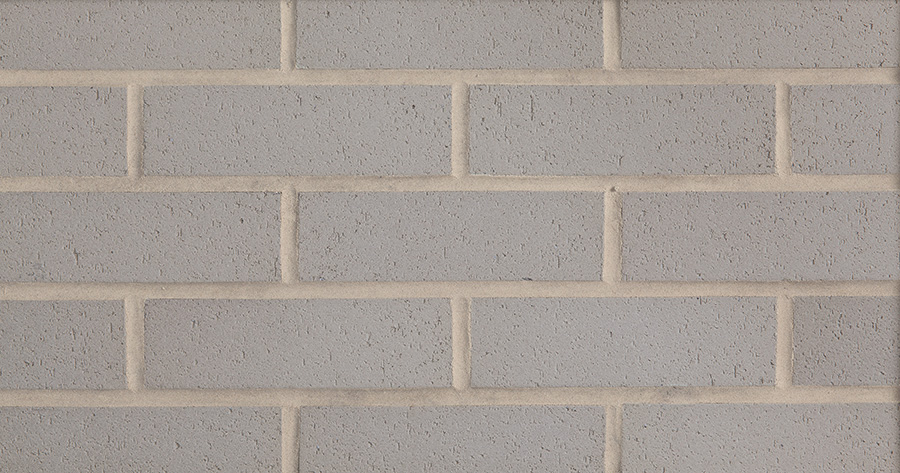
|
|---|
Williamsburg Series
A bygone age and a range of bricks that truly reflect the character and charm of those early artisans. With rustic color and texture combinations to choose from–each having its own unique feel–the Williamsburg Series creates an individual style for your new home.
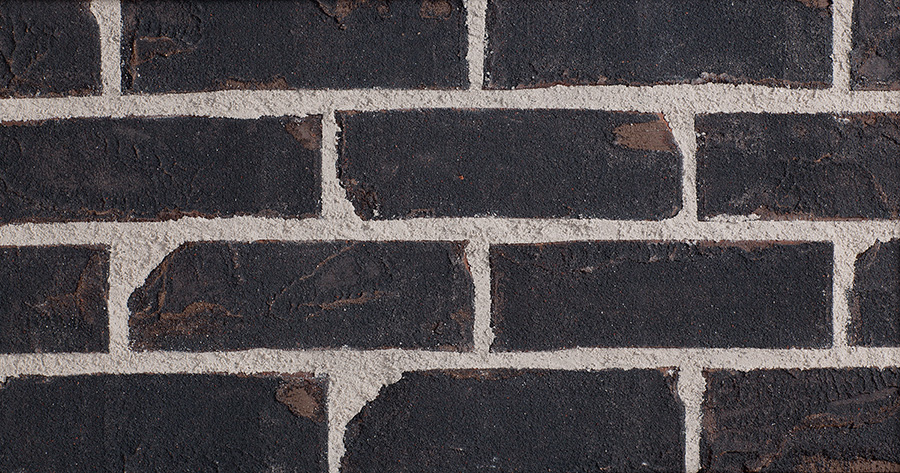
|

|

|

|
|---|
Request an Appointment - Baltimore Design Studio
Request an Appointment - Baltimore Design Studio
Status message
Debug: Image path is empty. in Drupal\twig_tweak\TwigTweakExtension::imageStyleFilter() (line 500 of modules/contrib/twig_tweak/src/TwigTweakExtension.php).
Drupal\twig_tweak\TwigTweakExtension::imageStyleFilter() (Line: 52) __TwigTemplate_db555a9a17eb891bb3880b2f7ae431d1->doDisplay() (Line: 388) Twig\Template->yield() (Line: 153) __TwigTemplate_fcd8bc630c126c6c857e5e50377a9702___78804656->doDisplay() (Line: 388) Twig\Template->yield() (Line: 52) __TwigTemplate_fcd8bc630c126c6c857e5e50377a9702->doDisplay() (Line: 388) Twig\Template->yield() (Line: 344) Twig\Template->display() (Line: 359) Twig\Template->render() (Line: 51) Twig\TemplateWrapper->render() (Line: 33) twig_render_template() (Line: 348) Drupal\Core\Theme\ThemeManager->render() (Line: 490) Drupal\Core\Render\Renderer->doRender() (Line: 248) Drupal\Core\Render\Renderer->render() (Line: 1204) Drupal\views\Plugin\views\field\FieldPluginBase->advancedRender() (Line: 238) template_preprocess_views_view_field() call_user_func_array() (Line: 261) Drupal\Core\Theme\ThemeManager->render() (Line: 490) Drupal\Core\Render\Renderer->doRender() (Line: 248) Drupal\Core\Render\Renderer->render() (Line: 1796) Drupal\views\Plugin\views\field\FieldPluginBase->theme() (Line: 769) Drupal\views\Plugin\views\style\StylePluginBase->elementPreRenderRow() call_user_func_array() (Line: 113) Drupal\Core\Render\Renderer->doTrustedCallback() (Line: 886) Drupal\Core\Render\Renderer->doCallback() (Line: 431) Drupal\Core\Render\Renderer->doRender() (Line: 248) Drupal\Core\Render\Renderer->render() (Line: 708) Drupal\views\Plugin\views\style\StylePluginBase->renderFields() (Line: 574) Drupal\views\Plugin\views\style\StylePluginBase->renderGrouping() (Line: 462) Drupal\views\Plugin\views\style\StylePluginBase->render() (Line: 2177) Drupal\views\Plugin\views\display\DisplayPluginBase->render() (Line: 1593) Drupal\views\ViewExecutable->render() (Line: 201) Drupal\views\Plugin\views\display\Page->execute() (Line: 1690) Drupal\views\ViewExecutable->executeDisplay() (Line: 81) Drupal\views\Element\View::preRenderViewElement() call_user_func_array() (Line: 113) Drupal\Core\Render\Renderer->doTrustedCallback() (Line: 886) Drupal\Core\Render\Renderer->doCallback() (Line: 431) Drupal\Core\Render\Renderer->doRender() (Line: 503) Drupal\Core\Render\Renderer->doRender() (Line: 248) Drupal\Core\Render\Renderer->render() (Line: 484) Drupal\Core\Template\TwigExtension->escapeFilter() (Line: 84) __TwigTemplate_2a4c8a9ffb1cb6725eb02fe44c1be2c5->doDisplay() (Line: 388) Twig\Template->yield() (Line: 344) Twig\Template->display() (Line: 359) Twig\Template->render() (Line: 51) Twig\TemplateWrapper->render() (Line: 33) twig_render_template() (Line: 348) Drupal\Core\Theme\ThemeManager->render() (Line: 490) Drupal\Core\Render\Renderer->doRender() (Line: 503) Drupal\Core\Render\Renderer->doRender() (Line: 248) Drupal\Core\Render\Renderer->render() (Line: 484) Drupal\Core\Template\TwigExtension->escapeFilter() (Line: 84) __TwigTemplate_9c3c2a1af6d276f7f33934c8144418e5->block_content() (Line: 432) Twig\Template->yieldBlock() (Line: 68) __TwigTemplate_9c3c2a1af6d276f7f33934c8144418e5->block_paragraph() (Line: 432) Twig\Template->yieldBlock() (Line: 51) __TwigTemplate_9c3c2a1af6d276f7f33934c8144418e5->doDisplay() (Line: 388) Twig\Template->yield() (Line: 344) Twig\Template->display() (Line: 359) Twig\Template->render() (Line: 51) Twig\TemplateWrapper->render() (Line: 33) twig_render_template() (Line: 348) Drupal\Core\Theme\ThemeManager->render() (Line: 490) Drupal\Core\Render\Renderer->doRender() (Line: 248) Drupal\Core\Render\Renderer->render() (Line: 484) Drupal\Core\Template\TwigExtension->escapeFilter() (Line: 64) __TwigTemplate_2a4c8a9ffb1cb6725eb02fe44c1be2c5->doDisplay() (Line: 388) Twig\Template->yield() (Line: 344) Twig\Template->display() (Line: 359) Twig\Template->render() (Line: 51) Twig\TemplateWrapper->render() (Line: 33) twig_render_template() (Line: 348) Drupal\Core\Theme\ThemeManager->render() (Line: 490) Drupal\Core\Render\Renderer->doRender() (Line: 503) Drupal\Core\Render\Renderer->doRender() (Line: 248) Drupal\Core\Render\Renderer->render() (Line: 484) Drupal\Core\Template\TwigExtension->escapeFilter() (Line: 105) __TwigTemplate_3ea76e43097b2ace5204b31bb4eb335a->doDisplay() (Line: 388) Twig\Template->yield() (Line: 344) Twig\Template->display() (Line: 359) Twig\Template->render() (Line: 51) Twig\TemplateWrapper->render() (Line: 33) twig_render_template() (Line: 348) Drupal\Core\Theme\ThemeManager->render() (Line: 490) Drupal\Core\Render\Renderer->doRender() (Line: 248) Drupal\Core\Render\Renderer->render() (Line: 238) Drupal\Core\Render\MainContent\HtmlRenderer->Drupal\Core\Render\MainContent\{closure}() (Line: 637) Drupal\Core\Render\Renderer->executeInRenderContext() (Line: 231) Drupal\Core\Render\MainContent\HtmlRenderer->prepare() (Line: 128) Drupal\Core\Render\MainContent\HtmlRenderer->renderResponse() (Line: 90) Drupal\Core\EventSubscriber\MainContentViewSubscriber->onViewRenderArray() call_user_func() (Line: 111) Drupal\Component\EventDispatcher\ContainerAwareEventDispatcher->dispatch() (Line: 186) Symfony\Component\HttpKernel\HttpKernel->handleRaw() (Line: 76) Symfony\Component\HttpKernel\HttpKernel->handle() (Line: 53) Drupal\Core\StackMiddleware\Session->handle() (Line: 48) Drupal\Core\StackMiddleware\KernelPreHandle->handle() (Line: 28) Drupal\Core\StackMiddleware\ContentLength->handle() (Line: 32) Drupal\big_pipe\StackMiddleware\ContentLength->handle() (Line: 201) Drupal\page_cache\StackMiddleware\PageCache->fetch() (Line: 138) Drupal\page_cache\StackMiddleware\PageCache->lookup() (Line: 87) Drupal\page_cache\StackMiddleware\PageCache->handle() (Line: 48) Drupal\Core\StackMiddleware\ReverseProxyMiddleware->handle() (Line: 51) Drupal\Core\StackMiddleware\NegotiationMiddleware->handle() (Line: 36) Drupal\Core\StackMiddleware\AjaxPageState->handle() (Line: 51) Drupal\Core\StackMiddleware\StackedHttpKernel->handle() (Line: 741) Drupal\Core\DrupalKernel->handle() (Line: 19)Debug: Image path is empty. in Drupal\twig_tweak\TwigTweakExtension::imageStyleFilter() (line 500 of modules/contrib/twig_tweak/src/TwigTweakExtension.php).
Drupal\twig_tweak\TwigTweakExtension::imageStyleFilter() (Line: 52) __TwigTemplate_db555a9a17eb891bb3880b2f7ae431d1->doDisplay() (Line: 388) Twig\Template->yield() (Line: 153) __TwigTemplate_fcd8bc630c126c6c857e5e50377a9702___78804656->doDisplay() (Line: 388) Twig\Template->yield() (Line: 52) __TwigTemplate_fcd8bc630c126c6c857e5e50377a9702->doDisplay() (Line: 388) Twig\Template->yield() (Line: 344) Twig\Template->display() (Line: 359) Twig\Template->render() (Line: 51) Twig\TemplateWrapper->render() (Line: 33) twig_render_template() (Line: 348) Drupal\Core\Theme\ThemeManager->render() (Line: 490) Drupal\Core\Render\Renderer->doRender() (Line: 248) Drupal\Core\Render\Renderer->render() (Line: 1204) Drupal\views\Plugin\views\field\FieldPluginBase->advancedRender() (Line: 238) template_preprocess_views_view_field() call_user_func_array() (Line: 261) Drupal\Core\Theme\ThemeManager->render() (Line: 490) Drupal\Core\Render\Renderer->doRender() (Line: 248) Drupal\Core\Render\Renderer->render() (Line: 1796) Drupal\views\Plugin\views\field\FieldPluginBase->theme() (Line: 769) Drupal\views\Plugin\views\style\StylePluginBase->elementPreRenderRow() call_user_func_array() (Line: 113) Drupal\Core\Render\Renderer->doTrustedCallback() (Line: 886) Drupal\Core\Render\Renderer->doCallback() (Line: 431) Drupal\Core\Render\Renderer->doRender() (Line: 248) Drupal\Core\Render\Renderer->render() (Line: 708) Drupal\views\Plugin\views\style\StylePluginBase->renderFields() (Line: 574) Drupal\views\Plugin\views\style\StylePluginBase->renderGrouping() (Line: 462) Drupal\views\Plugin\views\style\StylePluginBase->render() (Line: 2177) Drupal\views\Plugin\views\display\DisplayPluginBase->render() (Line: 1593) Drupal\views\ViewExecutable->render() (Line: 201) Drupal\views\Plugin\views\display\Page->execute() (Line: 1690) Drupal\views\ViewExecutable->executeDisplay() (Line: 81) Drupal\views\Element\View::preRenderViewElement() call_user_func_array() (Line: 113) Drupal\Core\Render\Renderer->doTrustedCallback() (Line: 886) Drupal\Core\Render\Renderer->doCallback() (Line: 431) Drupal\Core\Render\Renderer->doRender() (Line: 503) Drupal\Core\Render\Renderer->doRender() (Line: 248) Drupal\Core\Render\Renderer->render() (Line: 484) Drupal\Core\Template\TwigExtension->escapeFilter() (Line: 84) __TwigTemplate_2a4c8a9ffb1cb6725eb02fe44c1be2c5->doDisplay() (Line: 388) Twig\Template->yield() (Line: 344) Twig\Template->display() (Line: 359) Twig\Template->render() (Line: 51) Twig\TemplateWrapper->render() (Line: 33) twig_render_template() (Line: 348) Drupal\Core\Theme\ThemeManager->render() (Line: 490) Drupal\Core\Render\Renderer->doRender() (Line: 503) Drupal\Core\Render\Renderer->doRender() (Line: 248) Drupal\Core\Render\Renderer->render() (Line: 484) Drupal\Core\Template\TwigExtension->escapeFilter() (Line: 84) __TwigTemplate_9c3c2a1af6d276f7f33934c8144418e5->block_content() (Line: 432) Twig\Template->yieldBlock() (Line: 68) __TwigTemplate_9c3c2a1af6d276f7f33934c8144418e5->block_paragraph() (Line: 432) Twig\Template->yieldBlock() (Line: 51) __TwigTemplate_9c3c2a1af6d276f7f33934c8144418e5->doDisplay() (Line: 388) Twig\Template->yield() (Line: 344) Twig\Template->display() (Line: 359) Twig\Template->render() (Line: 51) Twig\TemplateWrapper->render() (Line: 33) twig_render_template() (Line: 348) Drupal\Core\Theme\ThemeManager->render() (Line: 490) Drupal\Core\Render\Renderer->doRender() (Line: 248) Drupal\Core\Render\Renderer->render() (Line: 484) Drupal\Core\Template\TwigExtension->escapeFilter() (Line: 64) __TwigTemplate_2a4c8a9ffb1cb6725eb02fe44c1be2c5->doDisplay() (Line: 388) Twig\Template->yield() (Line: 344) Twig\Template->display() (Line: 359) Twig\Template->render() (Line: 51) Twig\TemplateWrapper->render() (Line: 33) twig_render_template() (Line: 348) Drupal\Core\Theme\ThemeManager->render() (Line: 490) Drupal\Core\Render\Renderer->doRender() (Line: 503) Drupal\Core\Render\Renderer->doRender() (Line: 248) Drupal\Core\Render\Renderer->render() (Line: 484) Drupal\Core\Template\TwigExtension->escapeFilter() (Line: 105) __TwigTemplate_3ea76e43097b2ace5204b31bb4eb335a->doDisplay() (Line: 388) Twig\Template->yield() (Line: 344) Twig\Template->display() (Line: 359) Twig\Template->render() (Line: 51) Twig\TemplateWrapper->render() (Line: 33) twig_render_template() (Line: 348) Drupal\Core\Theme\ThemeManager->render() (Line: 490) Drupal\Core\Render\Renderer->doRender() (Line: 248) Drupal\Core\Render\Renderer->render() (Line: 238) Drupal\Core\Render\MainContent\HtmlRenderer->Drupal\Core\Render\MainContent\{closure}() (Line: 637) Drupal\Core\Render\Renderer->executeInRenderContext() (Line: 231) Drupal\Core\Render\MainContent\HtmlRenderer->prepare() (Line: 128) Drupal\Core\Render\MainContent\HtmlRenderer->renderResponse() (Line: 90) Drupal\Core\EventSubscriber\MainContentViewSubscriber->onViewRenderArray() call_user_func() (Line: 111) Drupal\Component\EventDispatcher\ContainerAwareEventDispatcher->dispatch() (Line: 186) Symfony\Component\HttpKernel\HttpKernel->handleRaw() (Line: 76) Symfony\Component\HttpKernel\HttpKernel->handle() (Line: 53) Drupal\Core\StackMiddleware\Session->handle() (Line: 48) Drupal\Core\StackMiddleware\KernelPreHandle->handle() (Line: 28) Drupal\Core\StackMiddleware\ContentLength->handle() (Line: 32) Drupal\big_pipe\StackMiddleware\ContentLength->handle() (Line: 201) Drupal\page_cache\StackMiddleware\PageCache->fetch() (Line: 138) Drupal\page_cache\StackMiddleware\PageCache->lookup() (Line: 87) Drupal\page_cache\StackMiddleware\PageCache->handle() (Line: 48) Drupal\Core\StackMiddleware\ReverseProxyMiddleware->handle() (Line: 51) Drupal\Core\StackMiddleware\NegotiationMiddleware->handle() (Line: 36) Drupal\Core\StackMiddleware\AjaxPageState->handle() (Line: 51) Drupal\Core\StackMiddleware\StackedHttpKernel->handle() (Line: 741) Drupal\Core\DrupalKernel->handle() (Line: 19)Debug: Image path is empty. in Drupal\twig_tweak\TwigTweakExtension::imageStyleFilter() (line 500 of modules/contrib/twig_tweak/src/TwigTweakExtension.php).
Drupal\twig_tweak\TwigTweakExtension::imageStyleFilter() (Line: 52) __TwigTemplate_db555a9a17eb891bb3880b2f7ae431d1->doDisplay() (Line: 388) Twig\Template->yield() (Line: 153) __TwigTemplate_fcd8bc630c126c6c857e5e50377a9702___78804656->doDisplay() (Line: 388) Twig\Template->yield() (Line: 52) __TwigTemplate_fcd8bc630c126c6c857e5e50377a9702->doDisplay() (Line: 388) Twig\Template->yield() (Line: 344) Twig\Template->display() (Line: 359) Twig\Template->render() (Line: 51) Twig\TemplateWrapper->render() (Line: 33) twig_render_template() (Line: 348) Drupal\Core\Theme\ThemeManager->render() (Line: 490) Drupal\Core\Render\Renderer->doRender() (Line: 248) Drupal\Core\Render\Renderer->render() (Line: 1204) Drupal\views\Plugin\views\field\FieldPluginBase->advancedRender() (Line: 238) template_preprocess_views_view_field() call_user_func_array() (Line: 261) Drupal\Core\Theme\ThemeManager->render() (Line: 490) Drupal\Core\Render\Renderer->doRender() (Line: 248) Drupal\Core\Render\Renderer->render() (Line: 1796) Drupal\views\Plugin\views\field\FieldPluginBase->theme() (Line: 769) Drupal\views\Plugin\views\style\StylePluginBase->elementPreRenderRow() call_user_func_array() (Line: 113) Drupal\Core\Render\Renderer->doTrustedCallback() (Line: 886) Drupal\Core\Render\Renderer->doCallback() (Line: 431) Drupal\Core\Render\Renderer->doRender() (Line: 248) Drupal\Core\Render\Renderer->render() (Line: 708) Drupal\views\Plugin\views\style\StylePluginBase->renderFields() (Line: 574) Drupal\views\Plugin\views\style\StylePluginBase->renderGrouping() (Line: 462) Drupal\views\Plugin\views\style\StylePluginBase->render() (Line: 2177) Drupal\views\Plugin\views\display\DisplayPluginBase->render() (Line: 1593) Drupal\views\ViewExecutable->render() (Line: 201) Drupal\views\Plugin\views\display\Page->execute() (Line: 1690) Drupal\views\ViewExecutable->executeDisplay() (Line: 81) Drupal\views\Element\View::preRenderViewElement() call_user_func_array() (Line: 113) Drupal\Core\Render\Renderer->doTrustedCallback() (Line: 886) Drupal\Core\Render\Renderer->doCallback() (Line: 431) Drupal\Core\Render\Renderer->doRender() (Line: 503) Drupal\Core\Render\Renderer->doRender() (Line: 248) Drupal\Core\Render\Renderer->render() (Line: 484) Drupal\Core\Template\TwigExtension->escapeFilter() (Line: 84) __TwigTemplate_2a4c8a9ffb1cb6725eb02fe44c1be2c5->doDisplay() (Line: 388) Twig\Template->yield() (Line: 344) Twig\Template->display() (Line: 359) Twig\Template->render() (Line: 51) Twig\TemplateWrapper->render() (Line: 33) twig_render_template() (Line: 348) Drupal\Core\Theme\ThemeManager->render() (Line: 490) Drupal\Core\Render\Renderer->doRender() (Line: 503) Drupal\Core\Render\Renderer->doRender() (Line: 248) Drupal\Core\Render\Renderer->render() (Line: 484) Drupal\Core\Template\TwigExtension->escapeFilter() (Line: 84) __TwigTemplate_9c3c2a1af6d276f7f33934c8144418e5->block_content() (Line: 432) Twig\Template->yieldBlock() (Line: 68) __TwigTemplate_9c3c2a1af6d276f7f33934c8144418e5->block_paragraph() (Line: 432) Twig\Template->yieldBlock() (Line: 51) __TwigTemplate_9c3c2a1af6d276f7f33934c8144418e5->doDisplay() (Line: 388) Twig\Template->yield() (Line: 344) Twig\Template->display() (Line: 359) Twig\Template->render() (Line: 51) Twig\TemplateWrapper->render() (Line: 33) twig_render_template() (Line: 348) Drupal\Core\Theme\ThemeManager->render() (Line: 490) Drupal\Core\Render\Renderer->doRender() (Line: 248) Drupal\Core\Render\Renderer->render() (Line: 484) Drupal\Core\Template\TwigExtension->escapeFilter() (Line: 64) __TwigTemplate_2a4c8a9ffb1cb6725eb02fe44c1be2c5->doDisplay() (Line: 388) Twig\Template->yield() (Line: 344) Twig\Template->display() (Line: 359) Twig\Template->render() (Line: 51) Twig\TemplateWrapper->render() (Line: 33) twig_render_template() (Line: 348) Drupal\Core\Theme\ThemeManager->render() (Line: 490) Drupal\Core\Render\Renderer->doRender() (Line: 503) Drupal\Core\Render\Renderer->doRender() (Line: 248) Drupal\Core\Render\Renderer->render() (Line: 484) Drupal\Core\Template\TwigExtension->escapeFilter() (Line: 105) __TwigTemplate_3ea76e43097b2ace5204b31bb4eb335a->doDisplay() (Line: 388) Twig\Template->yield() (Line: 344) Twig\Template->display() (Line: 359) Twig\Template->render() (Line: 51) Twig\TemplateWrapper->render() (Line: 33) twig_render_template() (Line: 348) Drupal\Core\Theme\ThemeManager->render() (Line: 490) Drupal\Core\Render\Renderer->doRender() (Line: 248) Drupal\Core\Render\Renderer->render() (Line: 238) Drupal\Core\Render\MainContent\HtmlRenderer->Drupal\Core\Render\MainContent\{closure}() (Line: 637) Drupal\Core\Render\Renderer->executeInRenderContext() (Line: 231) Drupal\Core\Render\MainContent\HtmlRenderer->prepare() (Line: 128) Drupal\Core\Render\MainContent\HtmlRenderer->renderResponse() (Line: 90) Drupal\Core\EventSubscriber\MainContentViewSubscriber->onViewRenderArray() call_user_func() (Line: 111) Drupal\Component\EventDispatcher\ContainerAwareEventDispatcher->dispatch() (Line: 186) Symfony\Component\HttpKernel\HttpKernel->handleRaw() (Line: 76) Symfony\Component\HttpKernel\HttpKernel->handle() (Line: 53) Drupal\Core\StackMiddleware\Session->handle() (Line: 48) Drupal\Core\StackMiddleware\KernelPreHandle->handle() (Line: 28) Drupal\Core\StackMiddleware\ContentLength->handle() (Line: 32) Drupal\big_pipe\StackMiddleware\ContentLength->handle() (Line: 201) Drupal\page_cache\StackMiddleware\PageCache->fetch() (Line: 138) Drupal\page_cache\StackMiddleware\PageCache->lookup() (Line: 87) Drupal\page_cache\StackMiddleware\PageCache->handle() (Line: 48) Drupal\Core\StackMiddleware\ReverseProxyMiddleware->handle() (Line: 51) Drupal\Core\StackMiddleware\NegotiationMiddleware->handle() (Line: 36) Drupal\Core\StackMiddleware\AjaxPageState->handle() (Line: 51) Drupal\Core\StackMiddleware\StackedHttpKernel->handle() (Line: 741) Drupal\Core\DrupalKernel->handle() (Line: 19)Debug: Image path is empty. in Drupal\twig_tweak\TwigTweakExtension::imageStyleFilter() (line 500 of modules/contrib/twig_tweak/src/TwigTweakExtension.php).
Drupal\twig_tweak\TwigTweakExtension::imageStyleFilter() (Line: 52) __TwigTemplate_db555a9a17eb891bb3880b2f7ae431d1->doDisplay() (Line: 388) Twig\Template->yield() (Line: 153) __TwigTemplate_fcd8bc630c126c6c857e5e50377a9702___78804656->doDisplay() (Line: 388) Twig\Template->yield() (Line: 52) __TwigTemplate_fcd8bc630c126c6c857e5e50377a9702->doDisplay() (Line: 388) Twig\Template->yield() (Line: 344) Twig\Template->display() (Line: 359) Twig\Template->render() (Line: 51) Twig\TemplateWrapper->render() (Line: 33) twig_render_template() (Line: 348) Drupal\Core\Theme\ThemeManager->render() (Line: 490) Drupal\Core\Render\Renderer->doRender() (Line: 248) Drupal\Core\Render\Renderer->render() (Line: 1204) Drupal\views\Plugin\views\field\FieldPluginBase->advancedRender() (Line: 238) template_preprocess_views_view_field() call_user_func_array() (Line: 261) Drupal\Core\Theme\ThemeManager->render() (Line: 490) Drupal\Core\Render\Renderer->doRender() (Line: 248) Drupal\Core\Render\Renderer->render() (Line: 1796) Drupal\views\Plugin\views\field\FieldPluginBase->theme() (Line: 769) Drupal\views\Plugin\views\style\StylePluginBase->elementPreRenderRow() call_user_func_array() (Line: 113) Drupal\Core\Render\Renderer->doTrustedCallback() (Line: 886) Drupal\Core\Render\Renderer->doCallback() (Line: 431) Drupal\Core\Render\Renderer->doRender() (Line: 248) Drupal\Core\Render\Renderer->render() (Line: 708) Drupal\views\Plugin\views\style\StylePluginBase->renderFields() (Line: 574) Drupal\views\Plugin\views\style\StylePluginBase->renderGrouping() (Line: 462) Drupal\views\Plugin\views\style\StylePluginBase->render() (Line: 2177) Drupal\views\Plugin\views\display\DisplayPluginBase->render() (Line: 1593) Drupal\views\ViewExecutable->render() (Line: 201) Drupal\views\Plugin\views\display\Page->execute() (Line: 1690) Drupal\views\ViewExecutable->executeDisplay() (Line: 81) Drupal\views\Element\View::preRenderViewElement() call_user_func_array() (Line: 113) Drupal\Core\Render\Renderer->doTrustedCallback() (Line: 886) Drupal\Core\Render\Renderer->doCallback() (Line: 431) Drupal\Core\Render\Renderer->doRender() (Line: 503) Drupal\Core\Render\Renderer->doRender() (Line: 248) Drupal\Core\Render\Renderer->render() (Line: 484) Drupal\Core\Template\TwigExtension->escapeFilter() (Line: 84) __TwigTemplate_2a4c8a9ffb1cb6725eb02fe44c1be2c5->doDisplay() (Line: 388) Twig\Template->yield() (Line: 344) Twig\Template->display() (Line: 359) Twig\Template->render() (Line: 51) Twig\TemplateWrapper->render() (Line: 33) twig_render_template() (Line: 348) Drupal\Core\Theme\ThemeManager->render() (Line: 490) Drupal\Core\Render\Renderer->doRender() (Line: 503) Drupal\Core\Render\Renderer->doRender() (Line: 248) Drupal\Core\Render\Renderer->render() (Line: 484) Drupal\Core\Template\TwigExtension->escapeFilter() (Line: 84) __TwigTemplate_9c3c2a1af6d276f7f33934c8144418e5->block_content() (Line: 432) Twig\Template->yieldBlock() (Line: 68) __TwigTemplate_9c3c2a1af6d276f7f33934c8144418e5->block_paragraph() (Line: 432) Twig\Template->yieldBlock() (Line: 51) __TwigTemplate_9c3c2a1af6d276f7f33934c8144418e5->doDisplay() (Line: 388) Twig\Template->yield() (Line: 344) Twig\Template->display() (Line: 359) Twig\Template->render() (Line: 51) Twig\TemplateWrapper->render() (Line: 33) twig_render_template() (Line: 348) Drupal\Core\Theme\ThemeManager->render() (Line: 490) Drupal\Core\Render\Renderer->doRender() (Line: 248) Drupal\Core\Render\Renderer->render() (Line: 484) Drupal\Core\Template\TwigExtension->escapeFilter() (Line: 64) __TwigTemplate_2a4c8a9ffb1cb6725eb02fe44c1be2c5->doDisplay() (Line: 388) Twig\Template->yield() (Line: 344) Twig\Template->display() (Line: 359) Twig\Template->render() (Line: 51) Twig\TemplateWrapper->render() (Line: 33) twig_render_template() (Line: 348) Drupal\Core\Theme\ThemeManager->render() (Line: 490) Drupal\Core\Render\Renderer->doRender() (Line: 503) Drupal\Core\Render\Renderer->doRender() (Line: 248) Drupal\Core\Render\Renderer->render() (Line: 484) Drupal\Core\Template\TwigExtension->escapeFilter() (Line: 105) __TwigTemplate_3ea76e43097b2ace5204b31bb4eb335a->doDisplay() (Line: 388) Twig\Template->yield() (Line: 344) Twig\Template->display() (Line: 359) Twig\Template->render() (Line: 51) Twig\TemplateWrapper->render() (Line: 33) twig_render_template() (Line: 348) Drupal\Core\Theme\ThemeManager->render() (Line: 490) Drupal\Core\Render\Renderer->doRender() (Line: 248) Drupal\Core\Render\Renderer->render() (Line: 238) Drupal\Core\Render\MainContent\HtmlRenderer->Drupal\Core\Render\MainContent\{closure}() (Line: 637) Drupal\Core\Render\Renderer->executeInRenderContext() (Line: 231) Drupal\Core\Render\MainContent\HtmlRenderer->prepare() (Line: 128) Drupal\Core\Render\MainContent\HtmlRenderer->renderResponse() (Line: 90) Drupal\Core\EventSubscriber\MainContentViewSubscriber->onViewRenderArray() call_user_func() (Line: 111) Drupal\Component\EventDispatcher\ContainerAwareEventDispatcher->dispatch() (Line: 186) Symfony\Component\HttpKernel\HttpKernel->handleRaw() (Line: 76) Symfony\Component\HttpKernel\HttpKernel->handle() (Line: 53) Drupal\Core\StackMiddleware\Session->handle() (Line: 48) Drupal\Core\StackMiddleware\KernelPreHandle->handle() (Line: 28) Drupal\Core\StackMiddleware\ContentLength->handle() (Line: 32) Drupal\big_pipe\StackMiddleware\ContentLength->handle() (Line: 201) Drupal\page_cache\StackMiddleware\PageCache->fetch() (Line: 138) Drupal\page_cache\StackMiddleware\PageCache->lookup() (Line: 87) Drupal\page_cache\StackMiddleware\PageCache->handle() (Line: 48) Drupal\Core\StackMiddleware\ReverseProxyMiddleware->handle() (Line: 51) Drupal\Core\StackMiddleware\NegotiationMiddleware->handle() (Line: 36) Drupal\Core\StackMiddleware\AjaxPageState->handle() (Line: 51) Drupal\Core\StackMiddleware\StackedHttpKernel->handle() (Line: 741) Drupal\Core\DrupalKernel->handle() (Line: 19)Debug: Image path is empty. in Drupal\twig_tweak\TwigTweakExtension::imageStyleFilter() (line 500 of modules/contrib/twig_tweak/src/TwigTweakExtension.php).
Drupal\twig_tweak\TwigTweakExtension::imageStyleFilter() (Line: 52) __TwigTemplate_db555a9a17eb891bb3880b2f7ae431d1->doDisplay() (Line: 388) Twig\Template->yield() (Line: 153) __TwigTemplate_fcd8bc630c126c6c857e5e50377a9702___78804656->doDisplay() (Line: 388) Twig\Template->yield() (Line: 52) __TwigTemplate_fcd8bc630c126c6c857e5e50377a9702->doDisplay() (Line: 388) Twig\Template->yield() (Line: 344) Twig\Template->display() (Line: 359) Twig\Template->render() (Line: 51) Twig\TemplateWrapper->render() (Line: 33) twig_render_template() (Line: 348) Drupal\Core\Theme\ThemeManager->render() (Line: 490) Drupal\Core\Render\Renderer->doRender() (Line: 248) Drupal\Core\Render\Renderer->render() (Line: 1204) Drupal\views\Plugin\views\field\FieldPluginBase->advancedRender() (Line: 238) template_preprocess_views_view_field() call_user_func_array() (Line: 261) Drupal\Core\Theme\ThemeManager->render() (Line: 490) Drupal\Core\Render\Renderer->doRender() (Line: 248) Drupal\Core\Render\Renderer->render() (Line: 1796) Drupal\views\Plugin\views\field\FieldPluginBase->theme() (Line: 769) Drupal\views\Plugin\views\style\StylePluginBase->elementPreRenderRow() call_user_func_array() (Line: 113) Drupal\Core\Render\Renderer->doTrustedCallback() (Line: 886) Drupal\Core\Render\Renderer->doCallback() (Line: 431) Drupal\Core\Render\Renderer->doRender() (Line: 248) Drupal\Core\Render\Renderer->render() (Line: 708) Drupal\views\Plugin\views\style\StylePluginBase->renderFields() (Line: 574) Drupal\views\Plugin\views\style\StylePluginBase->renderGrouping() (Line: 462) Drupal\views\Plugin\views\style\StylePluginBase->render() (Line: 2177) Drupal\views\Plugin\views\display\DisplayPluginBase->render() (Line: 1593) Drupal\views\ViewExecutable->render() (Line: 201) Drupal\views\Plugin\views\display\Page->execute() (Line: 1690) Drupal\views\ViewExecutable->executeDisplay() (Line: 81) Drupal\views\Element\View::preRenderViewElement() call_user_func_array() (Line: 113) Drupal\Core\Render\Renderer->doTrustedCallback() (Line: 886) Drupal\Core\Render\Renderer->doCallback() (Line: 431) Drupal\Core\Render\Renderer->doRender() (Line: 503) Drupal\Core\Render\Renderer->doRender() (Line: 248) Drupal\Core\Render\Renderer->render() (Line: 484) Drupal\Core\Template\TwigExtension->escapeFilter() (Line: 84) __TwigTemplate_2a4c8a9ffb1cb6725eb02fe44c1be2c5->doDisplay() (Line: 388) Twig\Template->yield() (Line: 344) Twig\Template->display() (Line: 359) Twig\Template->render() (Line: 51) Twig\TemplateWrapper->render() (Line: 33) twig_render_template() (Line: 348) Drupal\Core\Theme\ThemeManager->render() (Line: 490) Drupal\Core\Render\Renderer->doRender() (Line: 503) Drupal\Core\Render\Renderer->doRender() (Line: 248) Drupal\Core\Render\Renderer->render() (Line: 484) Drupal\Core\Template\TwigExtension->escapeFilter() (Line: 84) __TwigTemplate_9c3c2a1af6d276f7f33934c8144418e5->block_content() (Line: 432) Twig\Template->yieldBlock() (Line: 68) __TwigTemplate_9c3c2a1af6d276f7f33934c8144418e5->block_paragraph() (Line: 432) Twig\Template->yieldBlock() (Line: 51) __TwigTemplate_9c3c2a1af6d276f7f33934c8144418e5->doDisplay() (Line: 388) Twig\Template->yield() (Line: 344) Twig\Template->display() (Line: 359) Twig\Template->render() (Line: 51) Twig\TemplateWrapper->render() (Line: 33) twig_render_template() (Line: 348) Drupal\Core\Theme\ThemeManager->render() (Line: 490) Drupal\Core\Render\Renderer->doRender() (Line: 248) Drupal\Core\Render\Renderer->render() (Line: 484) Drupal\Core\Template\TwigExtension->escapeFilter() (Line: 64) __TwigTemplate_2a4c8a9ffb1cb6725eb02fe44c1be2c5->doDisplay() (Line: 388) Twig\Template->yield() (Line: 344) Twig\Template->display() (Line: 359) Twig\Template->render() (Line: 51) Twig\TemplateWrapper->render() (Line: 33) twig_render_template() (Line: 348) Drupal\Core\Theme\ThemeManager->render() (Line: 490) Drupal\Core\Render\Renderer->doRender() (Line: 503) Drupal\Core\Render\Renderer->doRender() (Line: 248) Drupal\Core\Render\Renderer->render() (Line: 484) Drupal\Core\Template\TwigExtension->escapeFilter() (Line: 105) __TwigTemplate_3ea76e43097b2ace5204b31bb4eb335a->doDisplay() (Line: 388) Twig\Template->yield() (Line: 344) Twig\Template->display() (Line: 359) Twig\Template->render() (Line: 51) Twig\TemplateWrapper->render() (Line: 33) twig_render_template() (Line: 348) Drupal\Core\Theme\ThemeManager->render() (Line: 490) Drupal\Core\Render\Renderer->doRender() (Line: 248) Drupal\Core\Render\Renderer->render() (Line: 238) Drupal\Core\Render\MainContent\HtmlRenderer->Drupal\Core\Render\MainContent\{closure}() (Line: 637) Drupal\Core\Render\Renderer->executeInRenderContext() (Line: 231) Drupal\Core\Render\MainContent\HtmlRenderer->prepare() (Line: 128) Drupal\Core\Render\MainContent\HtmlRenderer->renderResponse() (Line: 90) Drupal\Core\EventSubscriber\MainContentViewSubscriber->onViewRenderArray() call_user_func() (Line: 111) Drupal\Component\EventDispatcher\ContainerAwareEventDispatcher->dispatch() (Line: 186) Symfony\Component\HttpKernel\HttpKernel->handleRaw() (Line: 76) Symfony\Component\HttpKernel\HttpKernel->handle() (Line: 53) Drupal\Core\StackMiddleware\Session->handle() (Line: 48) Drupal\Core\StackMiddleware\KernelPreHandle->handle() (Line: 28) Drupal\Core\StackMiddleware\ContentLength->handle() (Line: 32) Drupal\big_pipe\StackMiddleware\ContentLength->handle() (Line: 201) Drupal\page_cache\StackMiddleware\PageCache->fetch() (Line: 138) Drupal\page_cache\StackMiddleware\PageCache->lookup() (Line: 87) Drupal\page_cache\StackMiddleware\PageCache->handle() (Line: 48) Drupal\Core\StackMiddleware\ReverseProxyMiddleware->handle() (Line: 51) Drupal\Core\StackMiddleware\NegotiationMiddleware->handle() (Line: 36) Drupal\Core\StackMiddleware\AjaxPageState->handle() (Line: 51) Drupal\Core\StackMiddleware\StackedHttpKernel->handle() (Line: 741) Drupal\Core\DrupalKernel->handle() (Line: 19)
Request an Appointment - New York Design Studio
Request an Appointment - New York Design Studio
Status message
Debug: Image path is empty. in Drupal\twig_tweak\TwigTweakExtension::imageStyleFilter() (line 500 of modules/contrib/twig_tweak/src/TwigTweakExtension.php).
Drupal\twig_tweak\TwigTweakExtension::imageStyleFilter() (Line: 52) __TwigTemplate_db555a9a17eb891bb3880b2f7ae431d1->doDisplay() (Line: 388) Twig\Template->yield() (Line: 153) __TwigTemplate_fcd8bc630c126c6c857e5e50377a9702___78804656->doDisplay() (Line: 388) Twig\Template->yield() (Line: 52) __TwigTemplate_fcd8bc630c126c6c857e5e50377a9702->doDisplay() (Line: 388) Twig\Template->yield() (Line: 344) Twig\Template->display() (Line: 359) Twig\Template->render() (Line: 51) Twig\TemplateWrapper->render() (Line: 33) twig_render_template() (Line: 348) Drupal\Core\Theme\ThemeManager->render() (Line: 490) Drupal\Core\Render\Renderer->doRender() (Line: 248) Drupal\Core\Render\Renderer->render() (Line: 1204) Drupal\views\Plugin\views\field\FieldPluginBase->advancedRender() (Line: 238) template_preprocess_views_view_field() call_user_func_array() (Line: 261) Drupal\Core\Theme\ThemeManager->render() (Line: 490) Drupal\Core\Render\Renderer->doRender() (Line: 248) Drupal\Core\Render\Renderer->render() (Line: 1796) Drupal\views\Plugin\views\field\FieldPluginBase->theme() (Line: 769) Drupal\views\Plugin\views\style\StylePluginBase->elementPreRenderRow() call_user_func_array() (Line: 113) Drupal\Core\Render\Renderer->doTrustedCallback() (Line: 886) Drupal\Core\Render\Renderer->doCallback() (Line: 431) Drupal\Core\Render\Renderer->doRender() (Line: 248) Drupal\Core\Render\Renderer->render() (Line: 708) Drupal\views\Plugin\views\style\StylePluginBase->renderFields() (Line: 574) Drupal\views\Plugin\views\style\StylePluginBase->renderGrouping() (Line: 462) Drupal\views\Plugin\views\style\StylePluginBase->render() (Line: 2177) Drupal\views\Plugin\views\display\DisplayPluginBase->render() (Line: 1593) Drupal\views\ViewExecutable->render() (Line: 201) Drupal\views\Plugin\views\display\Page->execute() (Line: 1690) Drupal\views\ViewExecutable->executeDisplay() (Line: 81) Drupal\views\Element\View::preRenderViewElement() call_user_func_array() (Line: 113) Drupal\Core\Render\Renderer->doTrustedCallback() (Line: 886) Drupal\Core\Render\Renderer->doCallback() (Line: 431) Drupal\Core\Render\Renderer->doRender() (Line: 503) Drupal\Core\Render\Renderer->doRender() (Line: 248) Drupal\Core\Render\Renderer->render() (Line: 484) Drupal\Core\Template\TwigExtension->escapeFilter() (Line: 84) __TwigTemplate_2a4c8a9ffb1cb6725eb02fe44c1be2c5->doDisplay() (Line: 388) Twig\Template->yield() (Line: 344) Twig\Template->display() (Line: 359) Twig\Template->render() (Line: 51) Twig\TemplateWrapper->render() (Line: 33) twig_render_template() (Line: 348) Drupal\Core\Theme\ThemeManager->render() (Line: 490) Drupal\Core\Render\Renderer->doRender() (Line: 503) Drupal\Core\Render\Renderer->doRender() (Line: 248) Drupal\Core\Render\Renderer->render() (Line: 484) Drupal\Core\Template\TwigExtension->escapeFilter() (Line: 84) __TwigTemplate_9c3c2a1af6d276f7f33934c8144418e5->block_content() (Line: 432) Twig\Template->yieldBlock() (Line: 68) __TwigTemplate_9c3c2a1af6d276f7f33934c8144418e5->block_paragraph() (Line: 432) Twig\Template->yieldBlock() (Line: 51) __TwigTemplate_9c3c2a1af6d276f7f33934c8144418e5->doDisplay() (Line: 388) Twig\Template->yield() (Line: 344) Twig\Template->display() (Line: 359) Twig\Template->render() (Line: 51) Twig\TemplateWrapper->render() (Line: 33) twig_render_template() (Line: 348) Drupal\Core\Theme\ThemeManager->render() (Line: 490) Drupal\Core\Render\Renderer->doRender() (Line: 248) Drupal\Core\Render\Renderer->render() (Line: 484) Drupal\Core\Template\TwigExtension->escapeFilter() (Line: 64) __TwigTemplate_2a4c8a9ffb1cb6725eb02fe44c1be2c5->doDisplay() (Line: 388) Twig\Template->yield() (Line: 344) Twig\Template->display() (Line: 359) Twig\Template->render() (Line: 51) Twig\TemplateWrapper->render() (Line: 33) twig_render_template() (Line: 348) Drupal\Core\Theme\ThemeManager->render() (Line: 490) Drupal\Core\Render\Renderer->doRender() (Line: 503) Drupal\Core\Render\Renderer->doRender() (Line: 248) Drupal\Core\Render\Renderer->render() (Line: 484) Drupal\Core\Template\TwigExtension->escapeFilter() (Line: 105) __TwigTemplate_3ea76e43097b2ace5204b31bb4eb335a->doDisplay() (Line: 388) Twig\Template->yield() (Line: 344) Twig\Template->display() (Line: 359) Twig\Template->render() (Line: 51) Twig\TemplateWrapper->render() (Line: 33) twig_render_template() (Line: 348) Drupal\Core\Theme\ThemeManager->render() (Line: 490) Drupal\Core\Render\Renderer->doRender() (Line: 248) Drupal\Core\Render\Renderer->render() (Line: 238) Drupal\Core\Render\MainContent\HtmlRenderer->Drupal\Core\Render\MainContent\{closure}() (Line: 637) Drupal\Core\Render\Renderer->executeInRenderContext() (Line: 231) Drupal\Core\Render\MainContent\HtmlRenderer->prepare() (Line: 128) Drupal\Core\Render\MainContent\HtmlRenderer->renderResponse() (Line: 90) Drupal\Core\EventSubscriber\MainContentViewSubscriber->onViewRenderArray() call_user_func() (Line: 111) Drupal\Component\EventDispatcher\ContainerAwareEventDispatcher->dispatch() (Line: 186) Symfony\Component\HttpKernel\HttpKernel->handleRaw() (Line: 76) Symfony\Component\HttpKernel\HttpKernel->handle() (Line: 53) Drupal\Core\StackMiddleware\Session->handle() (Line: 48) Drupal\Core\StackMiddleware\KernelPreHandle->handle() (Line: 28) Drupal\Core\StackMiddleware\ContentLength->handle() (Line: 32) Drupal\big_pipe\StackMiddleware\ContentLength->handle() (Line: 201) Drupal\page_cache\StackMiddleware\PageCache->fetch() (Line: 138) Drupal\page_cache\StackMiddleware\PageCache->lookup() (Line: 87) Drupal\page_cache\StackMiddleware\PageCache->handle() (Line: 48) Drupal\Core\StackMiddleware\ReverseProxyMiddleware->handle() (Line: 51) Drupal\Core\StackMiddleware\NegotiationMiddleware->handle() (Line: 36) Drupal\Core\StackMiddleware\AjaxPageState->handle() (Line: 51) Drupal\Core\StackMiddleware\StackedHttpKernel->handle() (Line: 741) Drupal\Core\DrupalKernel->handle() (Line: 19)Debug: Image path is empty. in Drupal\twig_tweak\TwigTweakExtension::imageStyleFilter() (line 500 of modules/contrib/twig_tweak/src/TwigTweakExtension.php).
Drupal\twig_tweak\TwigTweakExtension::imageStyleFilter() (Line: 52) __TwigTemplate_db555a9a17eb891bb3880b2f7ae431d1->doDisplay() (Line: 388) Twig\Template->yield() (Line: 153) __TwigTemplate_fcd8bc630c126c6c857e5e50377a9702___78804656->doDisplay() (Line: 388) Twig\Template->yield() (Line: 52) __TwigTemplate_fcd8bc630c126c6c857e5e50377a9702->doDisplay() (Line: 388) Twig\Template->yield() (Line: 344) Twig\Template->display() (Line: 359) Twig\Template->render() (Line: 51) Twig\TemplateWrapper->render() (Line: 33) twig_render_template() (Line: 348) Drupal\Core\Theme\ThemeManager->render() (Line: 490) Drupal\Core\Render\Renderer->doRender() (Line: 248) Drupal\Core\Render\Renderer->render() (Line: 1204) Drupal\views\Plugin\views\field\FieldPluginBase->advancedRender() (Line: 238) template_preprocess_views_view_field() call_user_func_array() (Line: 261) Drupal\Core\Theme\ThemeManager->render() (Line: 490) Drupal\Core\Render\Renderer->doRender() (Line: 248) Drupal\Core\Render\Renderer->render() (Line: 1796) Drupal\views\Plugin\views\field\FieldPluginBase->theme() (Line: 769) Drupal\views\Plugin\views\style\StylePluginBase->elementPreRenderRow() call_user_func_array() (Line: 113) Drupal\Core\Render\Renderer->doTrustedCallback() (Line: 886) Drupal\Core\Render\Renderer->doCallback() (Line: 431) Drupal\Core\Render\Renderer->doRender() (Line: 248) Drupal\Core\Render\Renderer->render() (Line: 708) Drupal\views\Plugin\views\style\StylePluginBase->renderFields() (Line: 574) Drupal\views\Plugin\views\style\StylePluginBase->renderGrouping() (Line: 462) Drupal\views\Plugin\views\style\StylePluginBase->render() (Line: 2177) Drupal\views\Plugin\views\display\DisplayPluginBase->render() (Line: 1593) Drupal\views\ViewExecutable->render() (Line: 201) Drupal\views\Plugin\views\display\Page->execute() (Line: 1690) Drupal\views\ViewExecutable->executeDisplay() (Line: 81) Drupal\views\Element\View::preRenderViewElement() call_user_func_array() (Line: 113) Drupal\Core\Render\Renderer->doTrustedCallback() (Line: 886) Drupal\Core\Render\Renderer->doCallback() (Line: 431) Drupal\Core\Render\Renderer->doRender() (Line: 503) Drupal\Core\Render\Renderer->doRender() (Line: 248) Drupal\Core\Render\Renderer->render() (Line: 484) Drupal\Core\Template\TwigExtension->escapeFilter() (Line: 84) __TwigTemplate_2a4c8a9ffb1cb6725eb02fe44c1be2c5->doDisplay() (Line: 388) Twig\Template->yield() (Line: 344) Twig\Template->display() (Line: 359) Twig\Template->render() (Line: 51) Twig\TemplateWrapper->render() (Line: 33) twig_render_template() (Line: 348) Drupal\Core\Theme\ThemeManager->render() (Line: 490) Drupal\Core\Render\Renderer->doRender() (Line: 503) Drupal\Core\Render\Renderer->doRender() (Line: 248) Drupal\Core\Render\Renderer->render() (Line: 484) Drupal\Core\Template\TwigExtension->escapeFilter() (Line: 84) __TwigTemplate_9c3c2a1af6d276f7f33934c8144418e5->block_content() (Line: 432) Twig\Template->yieldBlock() (Line: 68) __TwigTemplate_9c3c2a1af6d276f7f33934c8144418e5->block_paragraph() (Line: 432) Twig\Template->yieldBlock() (Line: 51) __TwigTemplate_9c3c2a1af6d276f7f33934c8144418e5->doDisplay() (Line: 388) Twig\Template->yield() (Line: 344) Twig\Template->display() (Line: 359) Twig\Template->render() (Line: 51) Twig\TemplateWrapper->render() (Line: 33) twig_render_template() (Line: 348) Drupal\Core\Theme\ThemeManager->render() (Line: 490) Drupal\Core\Render\Renderer->doRender() (Line: 248) Drupal\Core\Render\Renderer->render() (Line: 484) Drupal\Core\Template\TwigExtension->escapeFilter() (Line: 64) __TwigTemplate_2a4c8a9ffb1cb6725eb02fe44c1be2c5->doDisplay() (Line: 388) Twig\Template->yield() (Line: 344) Twig\Template->display() (Line: 359) Twig\Template->render() (Line: 51) Twig\TemplateWrapper->render() (Line: 33) twig_render_template() (Line: 348) Drupal\Core\Theme\ThemeManager->render() (Line: 490) Drupal\Core\Render\Renderer->doRender() (Line: 503) Drupal\Core\Render\Renderer->doRender() (Line: 248) Drupal\Core\Render\Renderer->render() (Line: 484) Drupal\Core\Template\TwigExtension->escapeFilter() (Line: 105) __TwigTemplate_3ea76e43097b2ace5204b31bb4eb335a->doDisplay() (Line: 388) Twig\Template->yield() (Line: 344) Twig\Template->display() (Line: 359) Twig\Template->render() (Line: 51) Twig\TemplateWrapper->render() (Line: 33) twig_render_template() (Line: 348) Drupal\Core\Theme\ThemeManager->render() (Line: 490) Drupal\Core\Render\Renderer->doRender() (Line: 248) Drupal\Core\Render\Renderer->render() (Line: 238) Drupal\Core\Render\MainContent\HtmlRenderer->Drupal\Core\Render\MainContent\{closure}() (Line: 637) Drupal\Core\Render\Renderer->executeInRenderContext() (Line: 231) Drupal\Core\Render\MainContent\HtmlRenderer->prepare() (Line: 128) Drupal\Core\Render\MainContent\HtmlRenderer->renderResponse() (Line: 90) Drupal\Core\EventSubscriber\MainContentViewSubscriber->onViewRenderArray() call_user_func() (Line: 111) Drupal\Component\EventDispatcher\ContainerAwareEventDispatcher->dispatch() (Line: 186) Symfony\Component\HttpKernel\HttpKernel->handleRaw() (Line: 76) Symfony\Component\HttpKernel\HttpKernel->handle() (Line: 53) Drupal\Core\StackMiddleware\Session->handle() (Line: 48) Drupal\Core\StackMiddleware\KernelPreHandle->handle() (Line: 28) Drupal\Core\StackMiddleware\ContentLength->handle() (Line: 32) Drupal\big_pipe\StackMiddleware\ContentLength->handle() (Line: 201) Drupal\page_cache\StackMiddleware\PageCache->fetch() (Line: 138) Drupal\page_cache\StackMiddleware\PageCache->lookup() (Line: 87) Drupal\page_cache\StackMiddleware\PageCache->handle() (Line: 48) Drupal\Core\StackMiddleware\ReverseProxyMiddleware->handle() (Line: 51) Drupal\Core\StackMiddleware\NegotiationMiddleware->handle() (Line: 36) Drupal\Core\StackMiddleware\AjaxPageState->handle() (Line: 51) Drupal\Core\StackMiddleware\StackedHttpKernel->handle() (Line: 741) Drupal\Core\DrupalKernel->handle() (Line: 19)Debug: Image path is empty. in Drupal\twig_tweak\TwigTweakExtension::imageStyleFilter() (line 500 of modules/contrib/twig_tweak/src/TwigTweakExtension.php).
Drupal\twig_tweak\TwigTweakExtension::imageStyleFilter() (Line: 52) __TwigTemplate_db555a9a17eb891bb3880b2f7ae431d1->doDisplay() (Line: 388) Twig\Template->yield() (Line: 153) __TwigTemplate_fcd8bc630c126c6c857e5e50377a9702___78804656->doDisplay() (Line: 388) Twig\Template->yield() (Line: 52) __TwigTemplate_fcd8bc630c126c6c857e5e50377a9702->doDisplay() (Line: 388) Twig\Template->yield() (Line: 344) Twig\Template->display() (Line: 359) Twig\Template->render() (Line: 51) Twig\TemplateWrapper->render() (Line: 33) twig_render_template() (Line: 348) Drupal\Core\Theme\ThemeManager->render() (Line: 490) Drupal\Core\Render\Renderer->doRender() (Line: 248) Drupal\Core\Render\Renderer->render() (Line: 1204) Drupal\views\Plugin\views\field\FieldPluginBase->advancedRender() (Line: 238) template_preprocess_views_view_field() call_user_func_array() (Line: 261) Drupal\Core\Theme\ThemeManager->render() (Line: 490) Drupal\Core\Render\Renderer->doRender() (Line: 248) Drupal\Core\Render\Renderer->render() (Line: 1796) Drupal\views\Plugin\views\field\FieldPluginBase->theme() (Line: 769) Drupal\views\Plugin\views\style\StylePluginBase->elementPreRenderRow() call_user_func_array() (Line: 113) Drupal\Core\Render\Renderer->doTrustedCallback() (Line: 886) Drupal\Core\Render\Renderer->doCallback() (Line: 431) Drupal\Core\Render\Renderer->doRender() (Line: 248) Drupal\Core\Render\Renderer->render() (Line: 708) Drupal\views\Plugin\views\style\StylePluginBase->renderFields() (Line: 574) Drupal\views\Plugin\views\style\StylePluginBase->renderGrouping() (Line: 462) Drupal\views\Plugin\views\style\StylePluginBase->render() (Line: 2177) Drupal\views\Plugin\views\display\DisplayPluginBase->render() (Line: 1593) Drupal\views\ViewExecutable->render() (Line: 201) Drupal\views\Plugin\views\display\Page->execute() (Line: 1690) Drupal\views\ViewExecutable->executeDisplay() (Line: 81) Drupal\views\Element\View::preRenderViewElement() call_user_func_array() (Line: 113) Drupal\Core\Render\Renderer->doTrustedCallback() (Line: 886) Drupal\Core\Render\Renderer->doCallback() (Line: 431) Drupal\Core\Render\Renderer->doRender() (Line: 503) Drupal\Core\Render\Renderer->doRender() (Line: 248) Drupal\Core\Render\Renderer->render() (Line: 484) Drupal\Core\Template\TwigExtension->escapeFilter() (Line: 84) __TwigTemplate_2a4c8a9ffb1cb6725eb02fe44c1be2c5->doDisplay() (Line: 388) Twig\Template->yield() (Line: 344) Twig\Template->display() (Line: 359) Twig\Template->render() (Line: 51) Twig\TemplateWrapper->render() (Line: 33) twig_render_template() (Line: 348) Drupal\Core\Theme\ThemeManager->render() (Line: 490) Drupal\Core\Render\Renderer->doRender() (Line: 503) Drupal\Core\Render\Renderer->doRender() (Line: 248) Drupal\Core\Render\Renderer->render() (Line: 484) Drupal\Core\Template\TwigExtension->escapeFilter() (Line: 84) __TwigTemplate_9c3c2a1af6d276f7f33934c8144418e5->block_content() (Line: 432) Twig\Template->yieldBlock() (Line: 68) __TwigTemplate_9c3c2a1af6d276f7f33934c8144418e5->block_paragraph() (Line: 432) Twig\Template->yieldBlock() (Line: 51) __TwigTemplate_9c3c2a1af6d276f7f33934c8144418e5->doDisplay() (Line: 388) Twig\Template->yield() (Line: 344) Twig\Template->display() (Line: 359) Twig\Template->render() (Line: 51) Twig\TemplateWrapper->render() (Line: 33) twig_render_template() (Line: 348) Drupal\Core\Theme\ThemeManager->render() (Line: 490) Drupal\Core\Render\Renderer->doRender() (Line: 248) Drupal\Core\Render\Renderer->render() (Line: 484) Drupal\Core\Template\TwigExtension->escapeFilter() (Line: 64) __TwigTemplate_2a4c8a9ffb1cb6725eb02fe44c1be2c5->doDisplay() (Line: 388) Twig\Template->yield() (Line: 344) Twig\Template->display() (Line: 359) Twig\Template->render() (Line: 51) Twig\TemplateWrapper->render() (Line: 33) twig_render_template() (Line: 348) Drupal\Core\Theme\ThemeManager->render() (Line: 490) Drupal\Core\Render\Renderer->doRender() (Line: 503) Drupal\Core\Render\Renderer->doRender() (Line: 248) Drupal\Core\Render\Renderer->render() (Line: 484) Drupal\Core\Template\TwigExtension->escapeFilter() (Line: 105) __TwigTemplate_3ea76e43097b2ace5204b31bb4eb335a->doDisplay() (Line: 388) Twig\Template->yield() (Line: 344) Twig\Template->display() (Line: 359) Twig\Template->render() (Line: 51) Twig\TemplateWrapper->render() (Line: 33) twig_render_template() (Line: 348) Drupal\Core\Theme\ThemeManager->render() (Line: 490) Drupal\Core\Render\Renderer->doRender() (Line: 248) Drupal\Core\Render\Renderer->render() (Line: 238) Drupal\Core\Render\MainContent\HtmlRenderer->Drupal\Core\Render\MainContent\{closure}() (Line: 637) Drupal\Core\Render\Renderer->executeInRenderContext() (Line: 231) Drupal\Core\Render\MainContent\HtmlRenderer->prepare() (Line: 128) Drupal\Core\Render\MainContent\HtmlRenderer->renderResponse() (Line: 90) Drupal\Core\EventSubscriber\MainContentViewSubscriber->onViewRenderArray() call_user_func() (Line: 111) Drupal\Component\EventDispatcher\ContainerAwareEventDispatcher->dispatch() (Line: 186) Symfony\Component\HttpKernel\HttpKernel->handleRaw() (Line: 76) Symfony\Component\HttpKernel\HttpKernel->handle() (Line: 53) Drupal\Core\StackMiddleware\Session->handle() (Line: 48) Drupal\Core\StackMiddleware\KernelPreHandle->handle() (Line: 28) Drupal\Core\StackMiddleware\ContentLength->handle() (Line: 32) Drupal\big_pipe\StackMiddleware\ContentLength->handle() (Line: 201) Drupal\page_cache\StackMiddleware\PageCache->fetch() (Line: 138) Drupal\page_cache\StackMiddleware\PageCache->lookup() (Line: 87) Drupal\page_cache\StackMiddleware\PageCache->handle() (Line: 48) Drupal\Core\StackMiddleware\ReverseProxyMiddleware->handle() (Line: 51) Drupal\Core\StackMiddleware\NegotiationMiddleware->handle() (Line: 36) Drupal\Core\StackMiddleware\AjaxPageState->handle() (Line: 51) Drupal\Core\StackMiddleware\StackedHttpKernel->handle() (Line: 741) Drupal\Core\DrupalKernel->handle() (Line: 19)Debug: Image path is empty. in Drupal\twig_tweak\TwigTweakExtension::imageStyleFilter() (line 500 of modules/contrib/twig_tweak/src/TwigTweakExtension.php).
Drupal\twig_tweak\TwigTweakExtension::imageStyleFilter() (Line: 52) __TwigTemplate_db555a9a17eb891bb3880b2f7ae431d1->doDisplay() (Line: 388) Twig\Template->yield() (Line: 153) __TwigTemplate_fcd8bc630c126c6c857e5e50377a9702___78804656->doDisplay() (Line: 388) Twig\Template->yield() (Line: 52) __TwigTemplate_fcd8bc630c126c6c857e5e50377a9702->doDisplay() (Line: 388) Twig\Template->yield() (Line: 344) Twig\Template->display() (Line: 359) Twig\Template->render() (Line: 51) Twig\TemplateWrapper->render() (Line: 33) twig_render_template() (Line: 348) Drupal\Core\Theme\ThemeManager->render() (Line: 490) Drupal\Core\Render\Renderer->doRender() (Line: 248) Drupal\Core\Render\Renderer->render() (Line: 1204) Drupal\views\Plugin\views\field\FieldPluginBase->advancedRender() (Line: 238) template_preprocess_views_view_field() call_user_func_array() (Line: 261) Drupal\Core\Theme\ThemeManager->render() (Line: 490) Drupal\Core\Render\Renderer->doRender() (Line: 248) Drupal\Core\Render\Renderer->render() (Line: 1796) Drupal\views\Plugin\views\field\FieldPluginBase->theme() (Line: 769) Drupal\views\Plugin\views\style\StylePluginBase->elementPreRenderRow() call_user_func_array() (Line: 113) Drupal\Core\Render\Renderer->doTrustedCallback() (Line: 886) Drupal\Core\Render\Renderer->doCallback() (Line: 431) Drupal\Core\Render\Renderer->doRender() (Line: 248) Drupal\Core\Render\Renderer->render() (Line: 708) Drupal\views\Plugin\views\style\StylePluginBase->renderFields() (Line: 574) Drupal\views\Plugin\views\style\StylePluginBase->renderGrouping() (Line: 462) Drupal\views\Plugin\views\style\StylePluginBase->render() (Line: 2177) Drupal\views\Plugin\views\display\DisplayPluginBase->render() (Line: 1593) Drupal\views\ViewExecutable->render() (Line: 201) Drupal\views\Plugin\views\display\Page->execute() (Line: 1690) Drupal\views\ViewExecutable->executeDisplay() (Line: 81) Drupal\views\Element\View::preRenderViewElement() call_user_func_array() (Line: 113) Drupal\Core\Render\Renderer->doTrustedCallback() (Line: 886) Drupal\Core\Render\Renderer->doCallback() (Line: 431) Drupal\Core\Render\Renderer->doRender() (Line: 503) Drupal\Core\Render\Renderer->doRender() (Line: 248) Drupal\Core\Render\Renderer->render() (Line: 484) Drupal\Core\Template\TwigExtension->escapeFilter() (Line: 84) __TwigTemplate_2a4c8a9ffb1cb6725eb02fe44c1be2c5->doDisplay() (Line: 388) Twig\Template->yield() (Line: 344) Twig\Template->display() (Line: 359) Twig\Template->render() (Line: 51) Twig\TemplateWrapper->render() (Line: 33) twig_render_template() (Line: 348) Drupal\Core\Theme\ThemeManager->render() (Line: 490) Drupal\Core\Render\Renderer->doRender() (Line: 503) Drupal\Core\Render\Renderer->doRender() (Line: 248) Drupal\Core\Render\Renderer->render() (Line: 484) Drupal\Core\Template\TwigExtension->escapeFilter() (Line: 84) __TwigTemplate_9c3c2a1af6d276f7f33934c8144418e5->block_content() (Line: 432) Twig\Template->yieldBlock() (Line: 68) __TwigTemplate_9c3c2a1af6d276f7f33934c8144418e5->block_paragraph() (Line: 432) Twig\Template->yieldBlock() (Line: 51) __TwigTemplate_9c3c2a1af6d276f7f33934c8144418e5->doDisplay() (Line: 388) Twig\Template->yield() (Line: 344) Twig\Template->display() (Line: 359) Twig\Template->render() (Line: 51) Twig\TemplateWrapper->render() (Line: 33) twig_render_template() (Line: 348) Drupal\Core\Theme\ThemeManager->render() (Line: 490) Drupal\Core\Render\Renderer->doRender() (Line: 248) Drupal\Core\Render\Renderer->render() (Line: 484) Drupal\Core\Template\TwigExtension->escapeFilter() (Line: 64) __TwigTemplate_2a4c8a9ffb1cb6725eb02fe44c1be2c5->doDisplay() (Line: 388) Twig\Template->yield() (Line: 344) Twig\Template->display() (Line: 359) Twig\Template->render() (Line: 51) Twig\TemplateWrapper->render() (Line: 33) twig_render_template() (Line: 348) Drupal\Core\Theme\ThemeManager->render() (Line: 490) Drupal\Core\Render\Renderer->doRender() (Line: 503) Drupal\Core\Render\Renderer->doRender() (Line: 248) Drupal\Core\Render\Renderer->render() (Line: 484) Drupal\Core\Template\TwigExtension->escapeFilter() (Line: 105) __TwigTemplate_3ea76e43097b2ace5204b31bb4eb335a->doDisplay() (Line: 388) Twig\Template->yield() (Line: 344) Twig\Template->display() (Line: 359) Twig\Template->render() (Line: 51) Twig\TemplateWrapper->render() (Line: 33) twig_render_template() (Line: 348) Drupal\Core\Theme\ThemeManager->render() (Line: 490) Drupal\Core\Render\Renderer->doRender() (Line: 248) Drupal\Core\Render\Renderer->render() (Line: 238) Drupal\Core\Render\MainContent\HtmlRenderer->Drupal\Core\Render\MainContent\{closure}() (Line: 637) Drupal\Core\Render\Renderer->executeInRenderContext() (Line: 231) Drupal\Core\Render\MainContent\HtmlRenderer->prepare() (Line: 128) Drupal\Core\Render\MainContent\HtmlRenderer->renderResponse() (Line: 90) Drupal\Core\EventSubscriber\MainContentViewSubscriber->onViewRenderArray() call_user_func() (Line: 111) Drupal\Component\EventDispatcher\ContainerAwareEventDispatcher->dispatch() (Line: 186) Symfony\Component\HttpKernel\HttpKernel->handleRaw() (Line: 76) Symfony\Component\HttpKernel\HttpKernel->handle() (Line: 53) Drupal\Core\StackMiddleware\Session->handle() (Line: 48) Drupal\Core\StackMiddleware\KernelPreHandle->handle() (Line: 28) Drupal\Core\StackMiddleware\ContentLength->handle() (Line: 32) Drupal\big_pipe\StackMiddleware\ContentLength->handle() (Line: 201) Drupal\page_cache\StackMiddleware\PageCache->fetch() (Line: 138) Drupal\page_cache\StackMiddleware\PageCache->lookup() (Line: 87) Drupal\page_cache\StackMiddleware\PageCache->handle() (Line: 48) Drupal\Core\StackMiddleware\ReverseProxyMiddleware->handle() (Line: 51) Drupal\Core\StackMiddleware\NegotiationMiddleware->handle() (Line: 36) Drupal\Core\StackMiddleware\AjaxPageState->handle() (Line: 51) Drupal\Core\StackMiddleware\StackedHttpKernel->handle() (Line: 741) Drupal\Core\DrupalKernel->handle() (Line: 19)Debug: Image path is empty. in Drupal\twig_tweak\TwigTweakExtension::imageStyleFilter() (line 500 of modules/contrib/twig_tweak/src/TwigTweakExtension.php).
Drupal\twig_tweak\TwigTweakExtension::imageStyleFilter() (Line: 52) __TwigTemplate_db555a9a17eb891bb3880b2f7ae431d1->doDisplay() (Line: 388) Twig\Template->yield() (Line: 153) __TwigTemplate_fcd8bc630c126c6c857e5e50377a9702___78804656->doDisplay() (Line: 388) Twig\Template->yield() (Line: 52) __TwigTemplate_fcd8bc630c126c6c857e5e50377a9702->doDisplay() (Line: 388) Twig\Template->yield() (Line: 344) Twig\Template->display() (Line: 359) Twig\Template->render() (Line: 51) Twig\TemplateWrapper->render() (Line: 33) twig_render_template() (Line: 348) Drupal\Core\Theme\ThemeManager->render() (Line: 490) Drupal\Core\Render\Renderer->doRender() (Line: 248) Drupal\Core\Render\Renderer->render() (Line: 1204) Drupal\views\Plugin\views\field\FieldPluginBase->advancedRender() (Line: 238) template_preprocess_views_view_field() call_user_func_array() (Line: 261) Drupal\Core\Theme\ThemeManager->render() (Line: 490) Drupal\Core\Render\Renderer->doRender() (Line: 248) Drupal\Core\Render\Renderer->render() (Line: 1796) Drupal\views\Plugin\views\field\FieldPluginBase->theme() (Line: 769) Drupal\views\Plugin\views\style\StylePluginBase->elementPreRenderRow() call_user_func_array() (Line: 113) Drupal\Core\Render\Renderer->doTrustedCallback() (Line: 886) Drupal\Core\Render\Renderer->doCallback() (Line: 431) Drupal\Core\Render\Renderer->doRender() (Line: 248) Drupal\Core\Render\Renderer->render() (Line: 708) Drupal\views\Plugin\views\style\StylePluginBase->renderFields() (Line: 574) Drupal\views\Plugin\views\style\StylePluginBase->renderGrouping() (Line: 462) Drupal\views\Plugin\views\style\StylePluginBase->render() (Line: 2177) Drupal\views\Plugin\views\display\DisplayPluginBase->render() (Line: 1593) Drupal\views\ViewExecutable->render() (Line: 201) Drupal\views\Plugin\views\display\Page->execute() (Line: 1690) Drupal\views\ViewExecutable->executeDisplay() (Line: 81) Drupal\views\Element\View::preRenderViewElement() call_user_func_array() (Line: 113) Drupal\Core\Render\Renderer->doTrustedCallback() (Line: 886) Drupal\Core\Render\Renderer->doCallback() (Line: 431) Drupal\Core\Render\Renderer->doRender() (Line: 503) Drupal\Core\Render\Renderer->doRender() (Line: 248) Drupal\Core\Render\Renderer->render() (Line: 484) Drupal\Core\Template\TwigExtension->escapeFilter() (Line: 84) __TwigTemplate_2a4c8a9ffb1cb6725eb02fe44c1be2c5->doDisplay() (Line: 388) Twig\Template->yield() (Line: 344) Twig\Template->display() (Line: 359) Twig\Template->render() (Line: 51) Twig\TemplateWrapper->render() (Line: 33) twig_render_template() (Line: 348) Drupal\Core\Theme\ThemeManager->render() (Line: 490) Drupal\Core\Render\Renderer->doRender() (Line: 503) Drupal\Core\Render\Renderer->doRender() (Line: 248) Drupal\Core\Render\Renderer->render() (Line: 484) Drupal\Core\Template\TwigExtension->escapeFilter() (Line: 84) __TwigTemplate_9c3c2a1af6d276f7f33934c8144418e5->block_content() (Line: 432) Twig\Template->yieldBlock() (Line: 68) __TwigTemplate_9c3c2a1af6d276f7f33934c8144418e5->block_paragraph() (Line: 432) Twig\Template->yieldBlock() (Line: 51) __TwigTemplate_9c3c2a1af6d276f7f33934c8144418e5->doDisplay() (Line: 388) Twig\Template->yield() (Line: 344) Twig\Template->display() (Line: 359) Twig\Template->render() (Line: 51) Twig\TemplateWrapper->render() (Line: 33) twig_render_template() (Line: 348) Drupal\Core\Theme\ThemeManager->render() (Line: 490) Drupal\Core\Render\Renderer->doRender() (Line: 248) Drupal\Core\Render\Renderer->render() (Line: 484) Drupal\Core\Template\TwigExtension->escapeFilter() (Line: 64) __TwigTemplate_2a4c8a9ffb1cb6725eb02fe44c1be2c5->doDisplay() (Line: 388) Twig\Template->yield() (Line: 344) Twig\Template->display() (Line: 359) Twig\Template->render() (Line: 51) Twig\TemplateWrapper->render() (Line: 33) twig_render_template() (Line: 348) Drupal\Core\Theme\ThemeManager->render() (Line: 490) Drupal\Core\Render\Renderer->doRender() (Line: 503) Drupal\Core\Render\Renderer->doRender() (Line: 248) Drupal\Core\Render\Renderer->render() (Line: 484) Drupal\Core\Template\TwigExtension->escapeFilter() (Line: 105) __TwigTemplate_3ea76e43097b2ace5204b31bb4eb335a->doDisplay() (Line: 388) Twig\Template->yield() (Line: 344) Twig\Template->display() (Line: 359) Twig\Template->render() (Line: 51) Twig\TemplateWrapper->render() (Line: 33) twig_render_template() (Line: 348) Drupal\Core\Theme\ThemeManager->render() (Line: 490) Drupal\Core\Render\Renderer->doRender() (Line: 248) Drupal\Core\Render\Renderer->render() (Line: 238) Drupal\Core\Render\MainContent\HtmlRenderer->Drupal\Core\Render\MainContent\{closure}() (Line: 637) Drupal\Core\Render\Renderer->executeInRenderContext() (Line: 231) Drupal\Core\Render\MainContent\HtmlRenderer->prepare() (Line: 128) Drupal\Core\Render\MainContent\HtmlRenderer->renderResponse() (Line: 90) Drupal\Core\EventSubscriber\MainContentViewSubscriber->onViewRenderArray() call_user_func() (Line: 111) Drupal\Component\EventDispatcher\ContainerAwareEventDispatcher->dispatch() (Line: 186) Symfony\Component\HttpKernel\HttpKernel->handleRaw() (Line: 76) Symfony\Component\HttpKernel\HttpKernel->handle() (Line: 53) Drupal\Core\StackMiddleware\Session->handle() (Line: 48) Drupal\Core\StackMiddleware\KernelPreHandle->handle() (Line: 28) Drupal\Core\StackMiddleware\ContentLength->handle() (Line: 32) Drupal\big_pipe\StackMiddleware\ContentLength->handle() (Line: 201) Drupal\page_cache\StackMiddleware\PageCache->fetch() (Line: 138) Drupal\page_cache\StackMiddleware\PageCache->lookup() (Line: 87) Drupal\page_cache\StackMiddleware\PageCache->handle() (Line: 48) Drupal\Core\StackMiddleware\ReverseProxyMiddleware->handle() (Line: 51) Drupal\Core\StackMiddleware\NegotiationMiddleware->handle() (Line: 36) Drupal\Core\StackMiddleware\AjaxPageState->handle() (Line: 51) Drupal\Core\StackMiddleware\StackedHttpKernel->handle() (Line: 741) Drupal\Core\DrupalKernel->handle() (Line: 19)
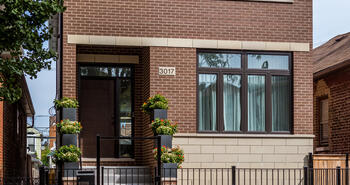
Hearthside Velour Ironspot
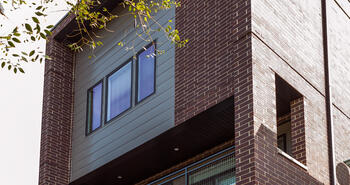
Hearthside Velour Ironspot
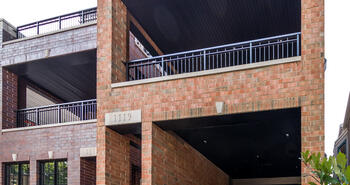
Rosewood
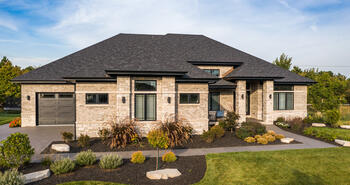
Glacier Gray Western
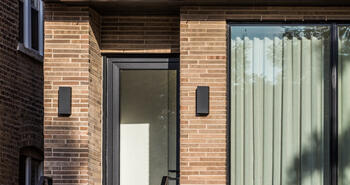
Flint Hills Roman Maximus